08-02-vl-2-hash-836
Mixture of archimedes and other small pieces of fossils
Mixture of archimedes and other small pieces of fossils
Collecting along the shoreline at the last stop.
Searching for fossils in the road cut.
Once again, the word, "intrepid" comes to mind when BPS makes a midwinter trip! With the temps in the upper 30's and low 40's and 15-20 mph winds, it was a toss up as to which trip to this site was the coldest! In spite of the weather, around 23 fossil seekers came for the fun. Our first stop was under sunny skys and slight winds which brought the temperature up to a bearable level. This is a great site, featuring a prehistoric coral reef that always has excellent specimens washed out during the previous year. It's always a temptation go after the big boulders, but they're much larger than they look (like iceburgs) so we can only stand and drool and capture them on camera. At the first stop on the lake numerous specimens of blastoids, archimedes, and crinoid stems were found, and a very nice piece of petrified/ permineralized wood. Next we went to the other side of the lake where it was downright windy and bitter cold. More crinoid stems, straight cephalapods, and some unknown specimens were collected as well as great slabs of fossil hash. These make great teaching tools as well as attractive showpieces. We were also treated to the sight of Bill "walking on water!" Next we stopped at a roadcut which yielded a few more nice specimens, and a lot more icy wind. After one last site check, hunger was the issue, so most of the group organized to follow Greg, who always seems to know the best places to chow down, to a long enjoyable evening meal at a "secret" local steak house, After a great time of good food, rehashing the day and catching up, tired BPS members headed home.
--Edited by Vicki Lais
(Photos courtesy Jan Novak, Bill Fowler, Chris Lais, & Vicki Lais)
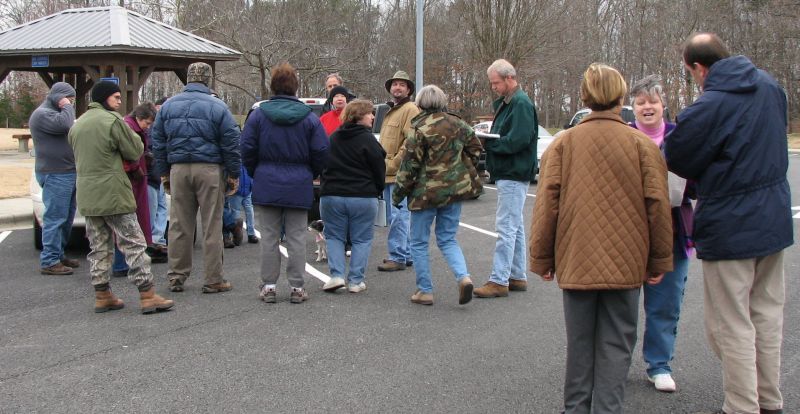
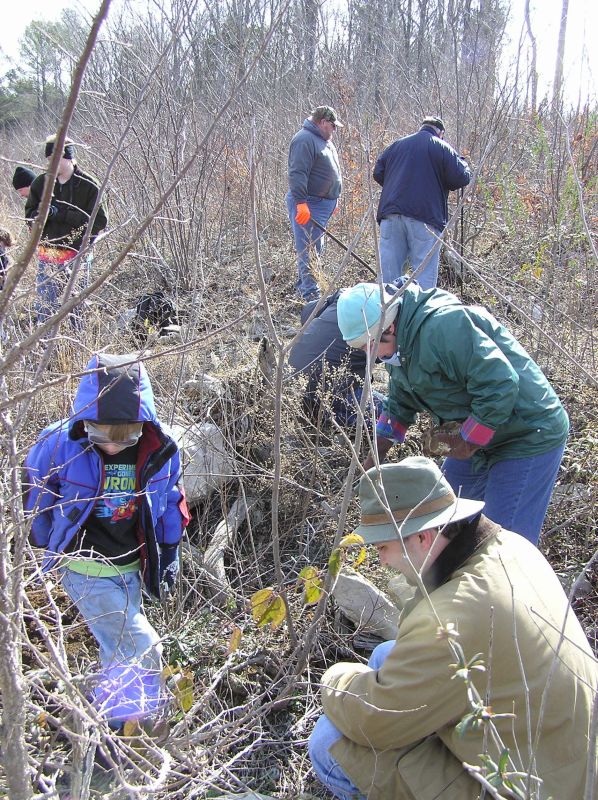
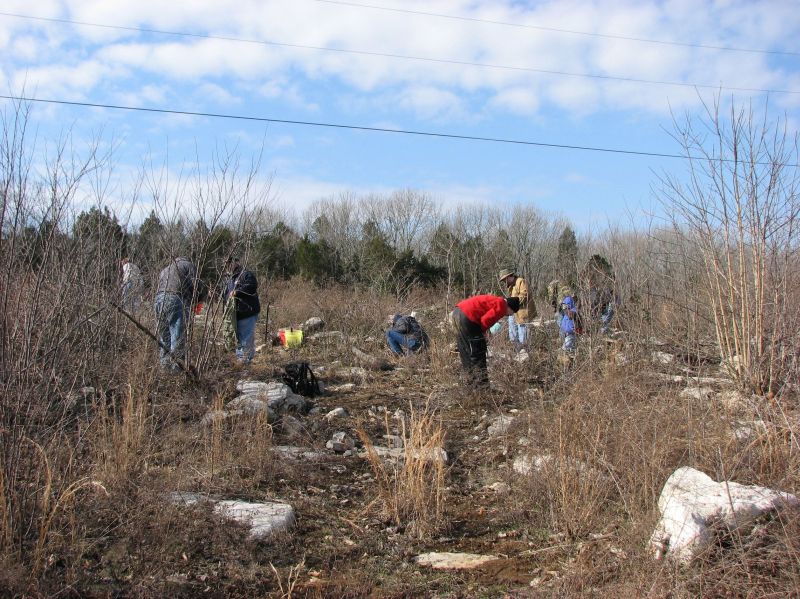
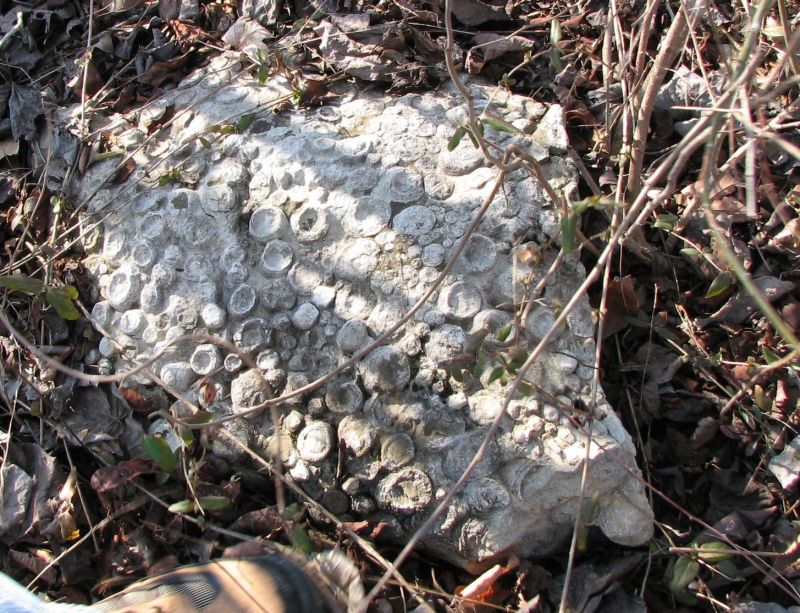
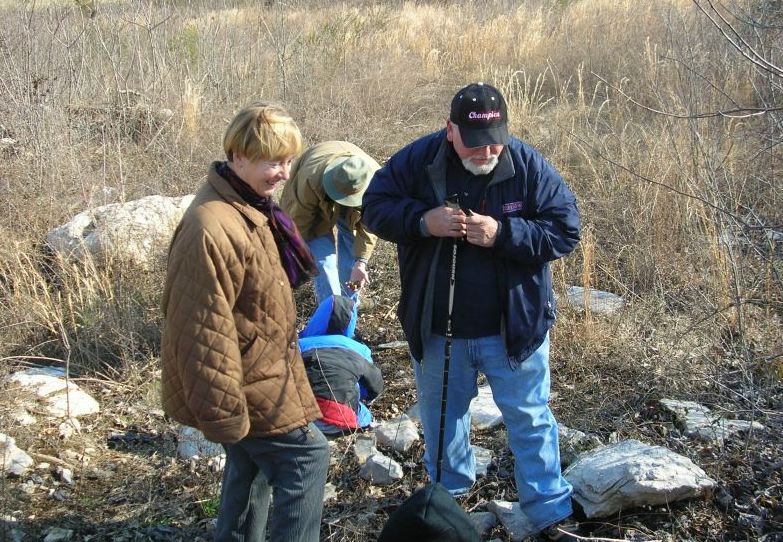
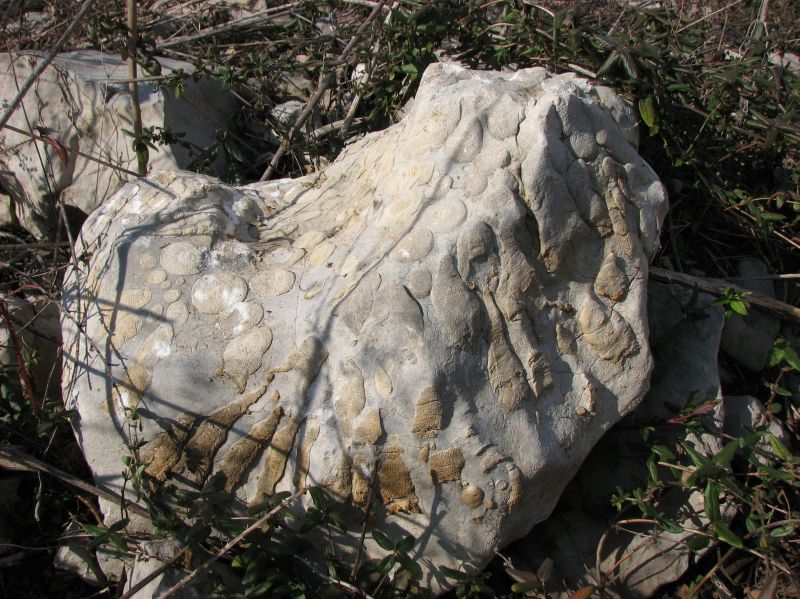
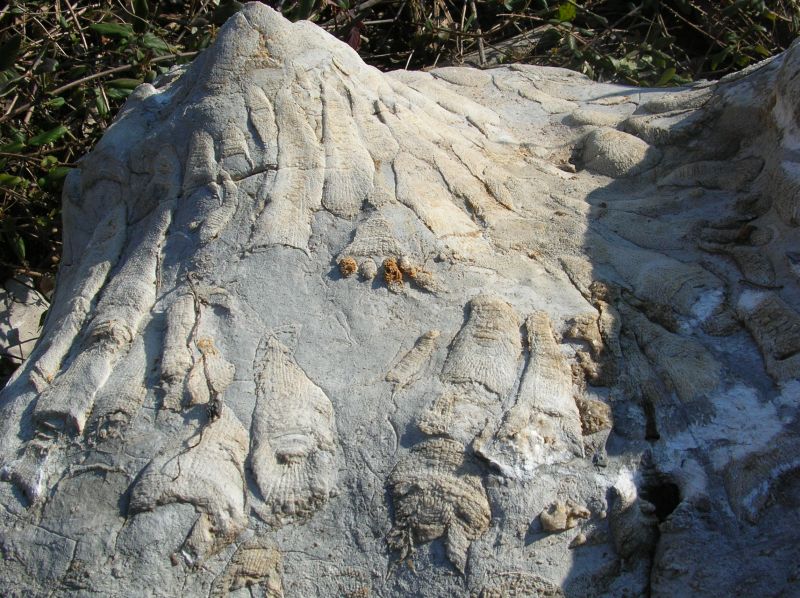
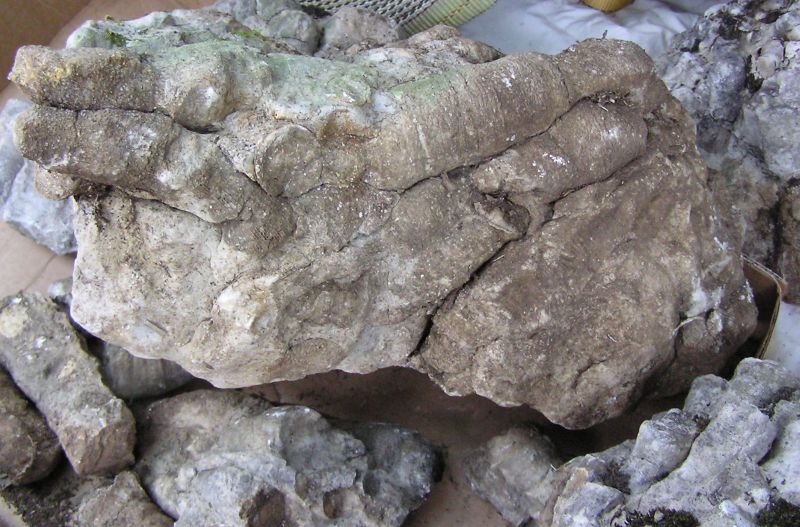
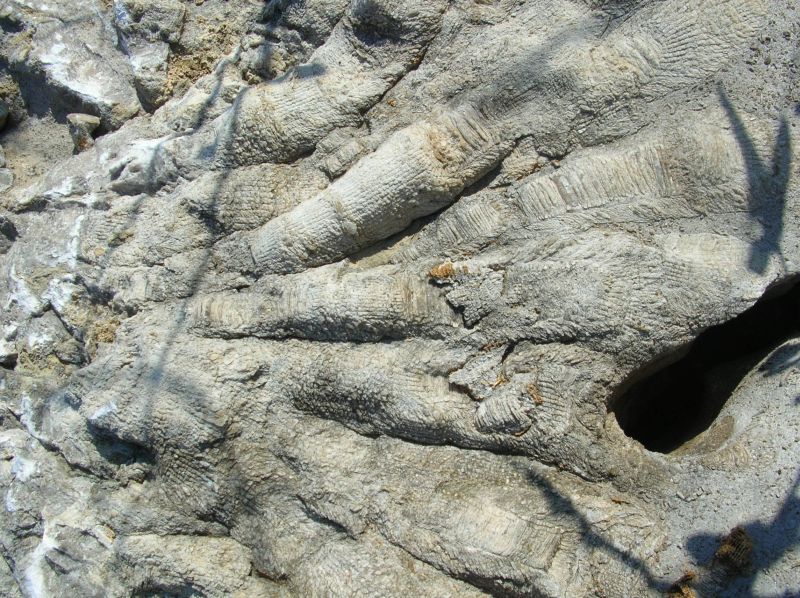
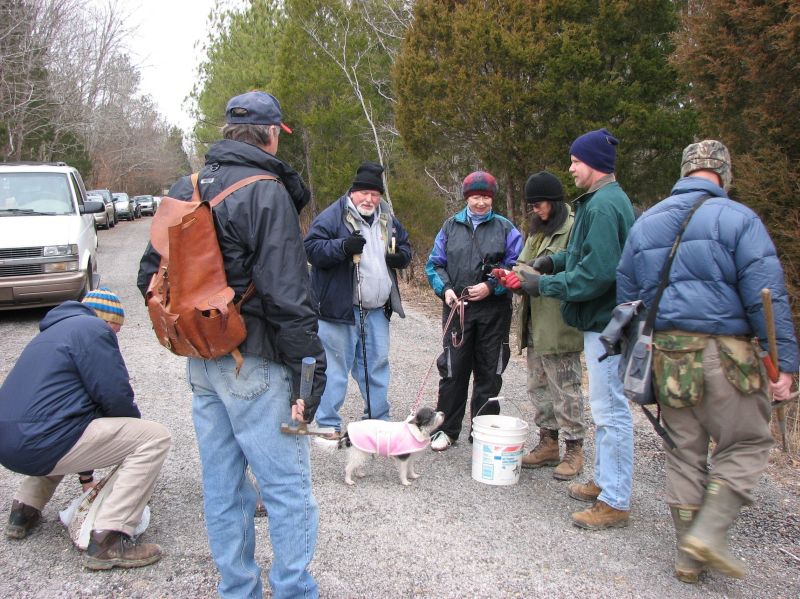
On to the next stop, where we were given an overview of the collecting area.
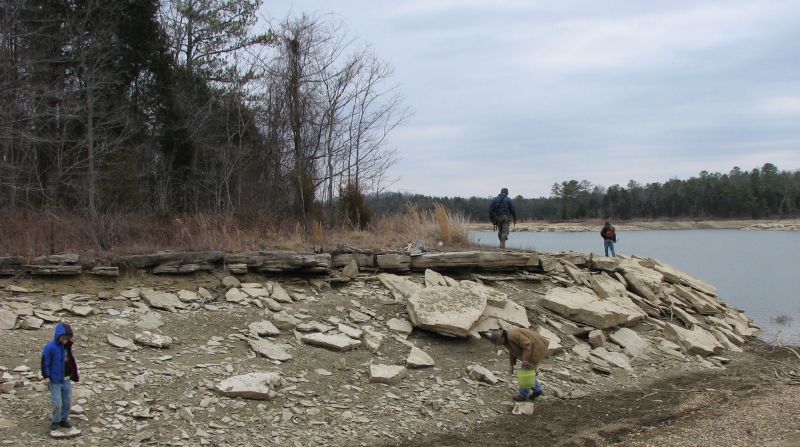
Shoreline of the lake, water is way down in winter.
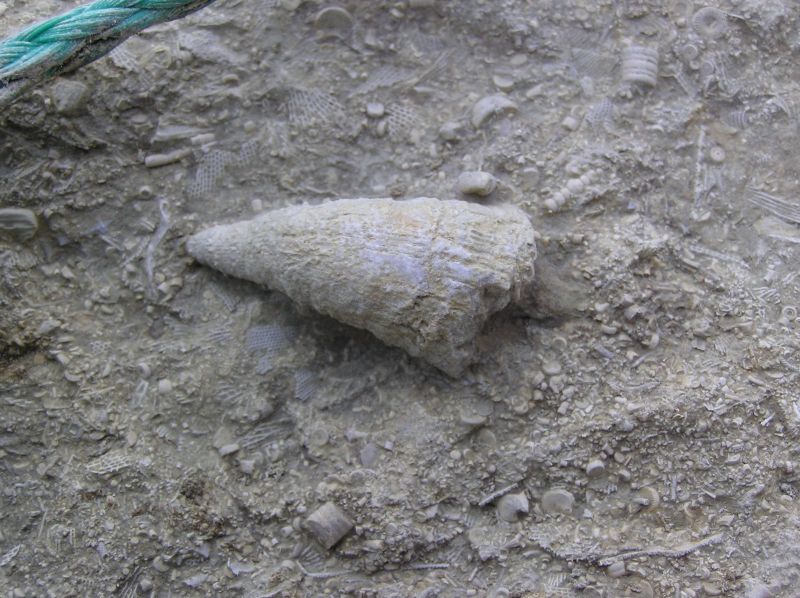
Horned coral.
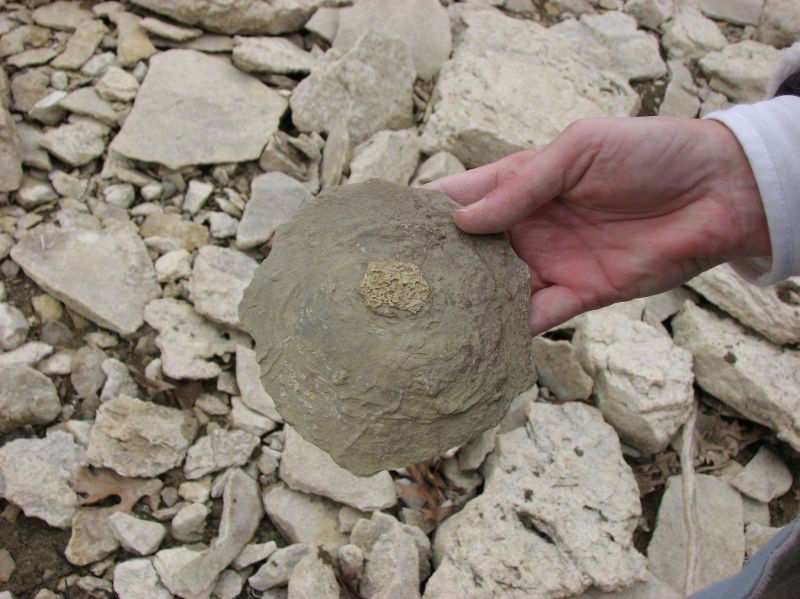
A sponge?
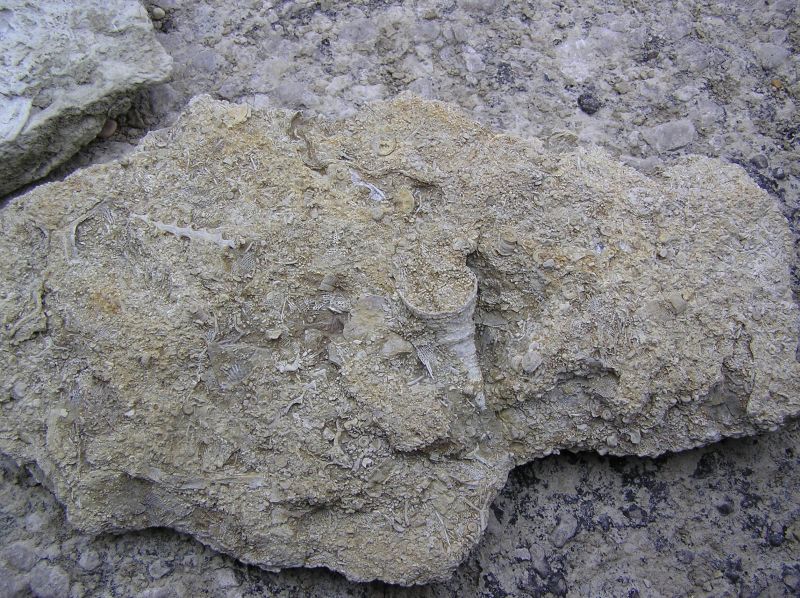
Horned coral.
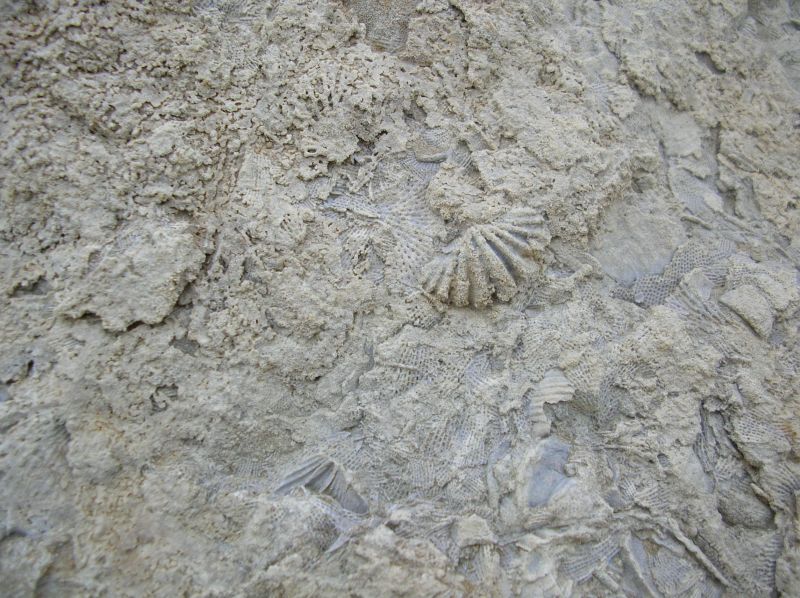
Nice brachiopod.
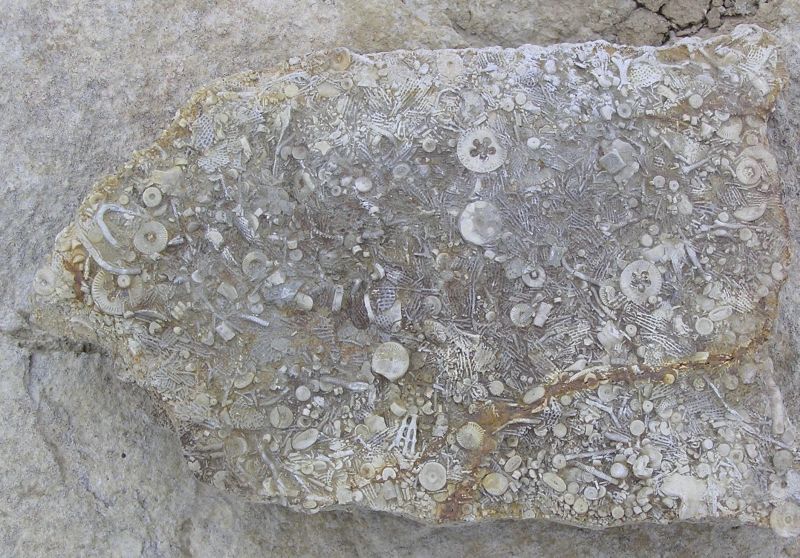
Most rocks in the area consist of numerous small fragments of fossils. Most visible on this specimen are crinoid stems and bryozoan (or the netting material from archimedes.)
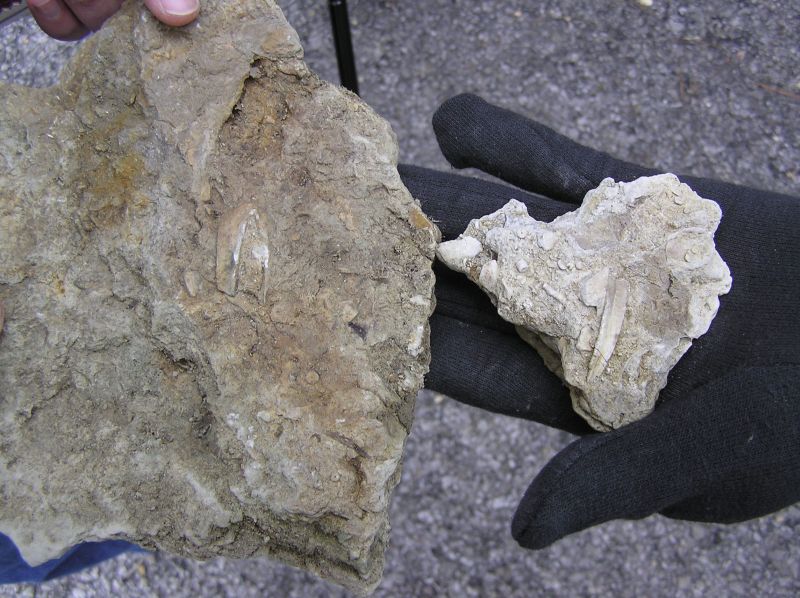
Parts of very large, but broken, blastiods.
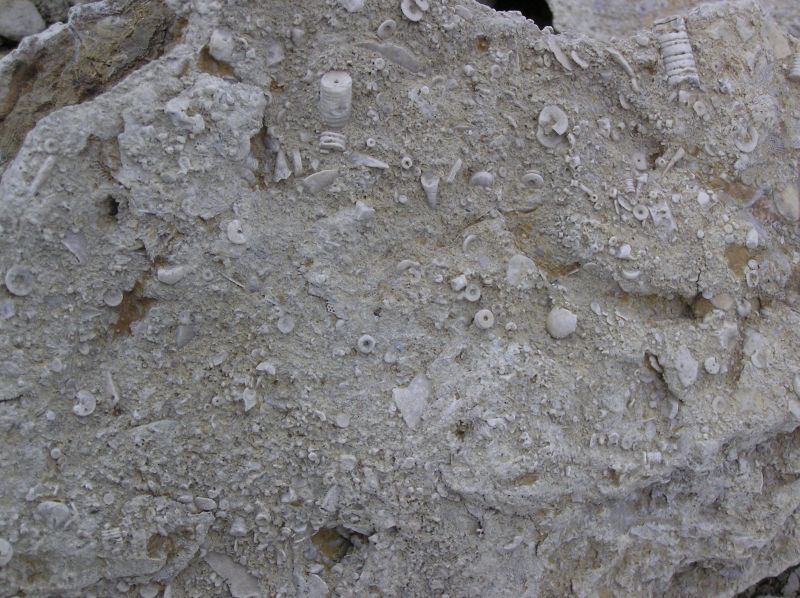
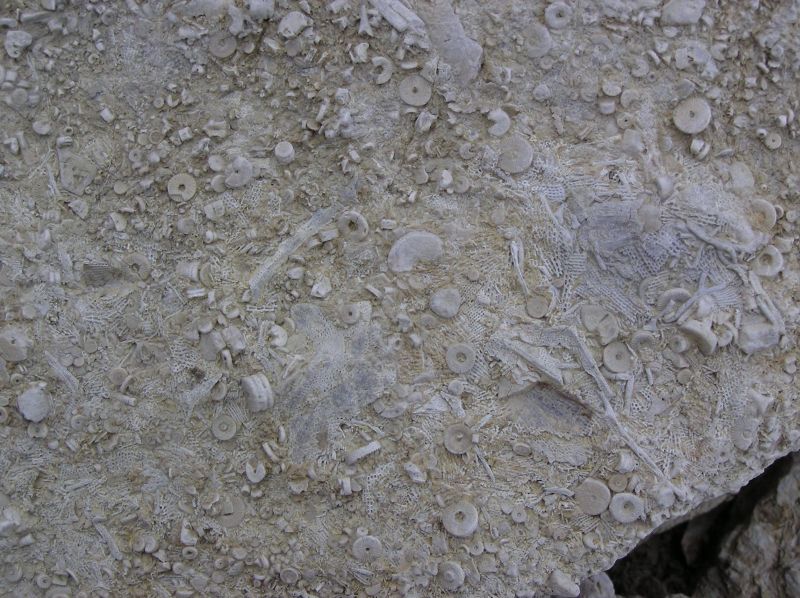
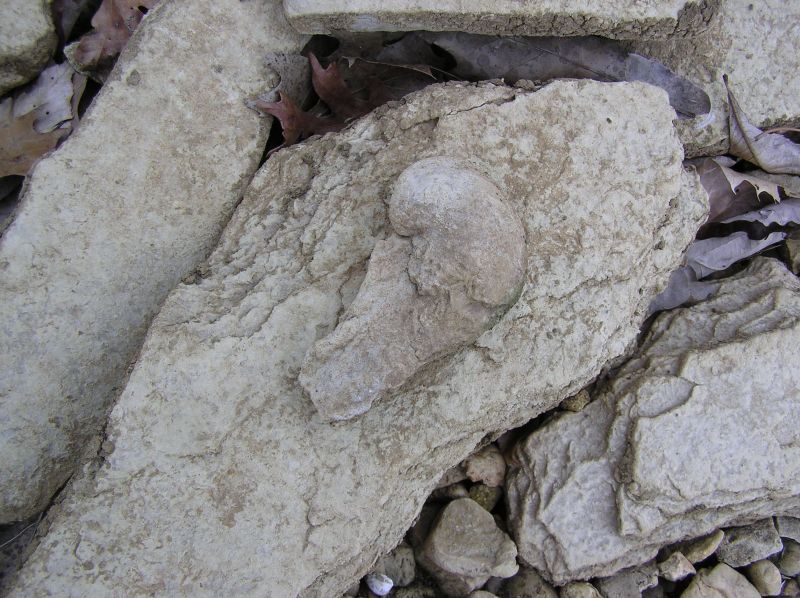
Tiny gastropod.
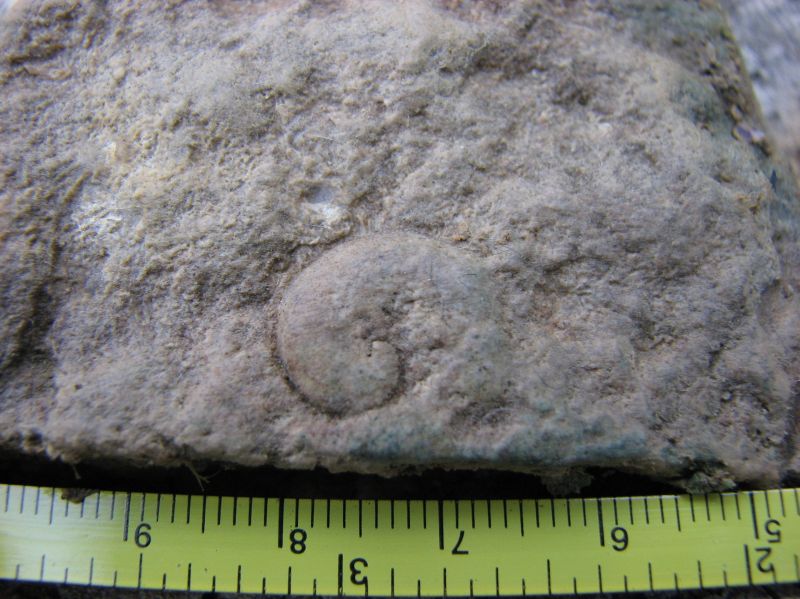
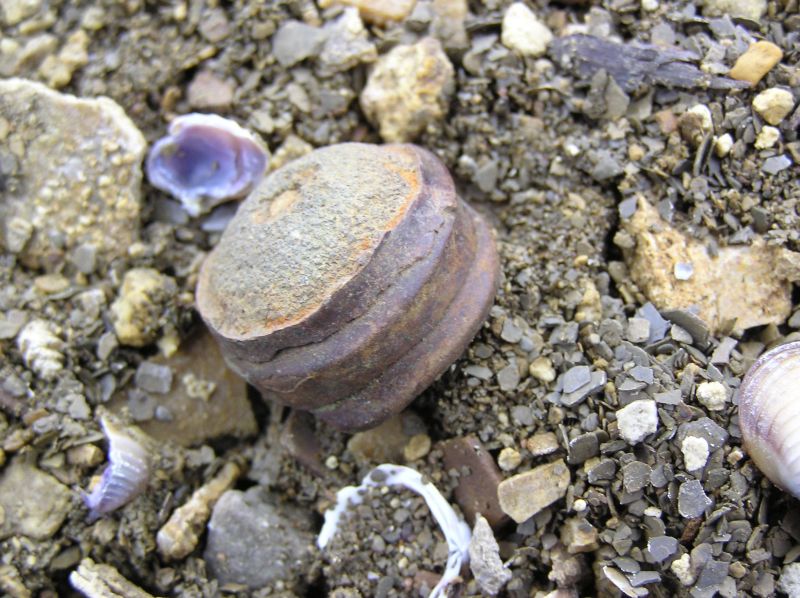
Unknown round fossil.
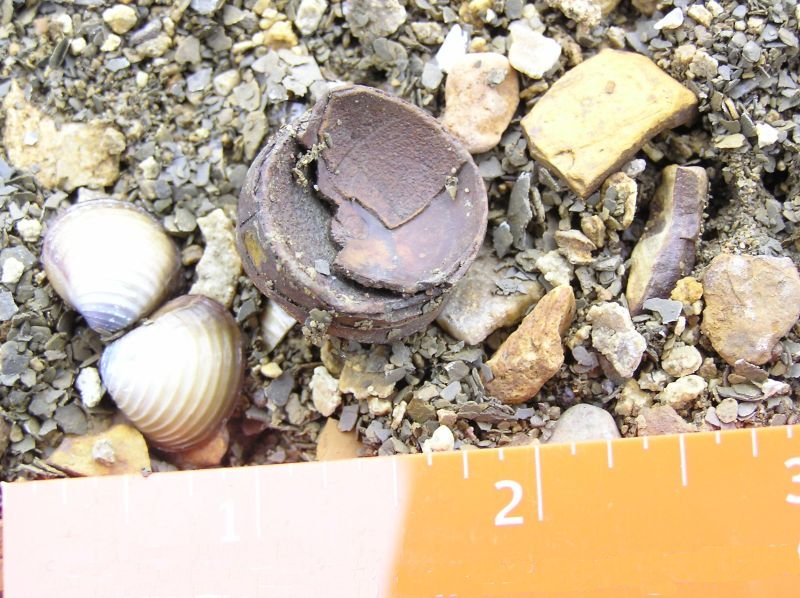
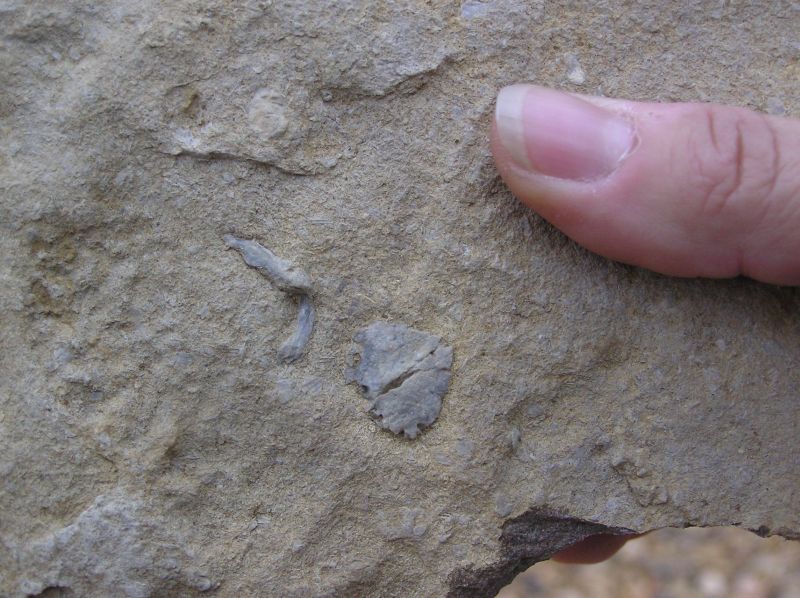
Another unknown fossil.
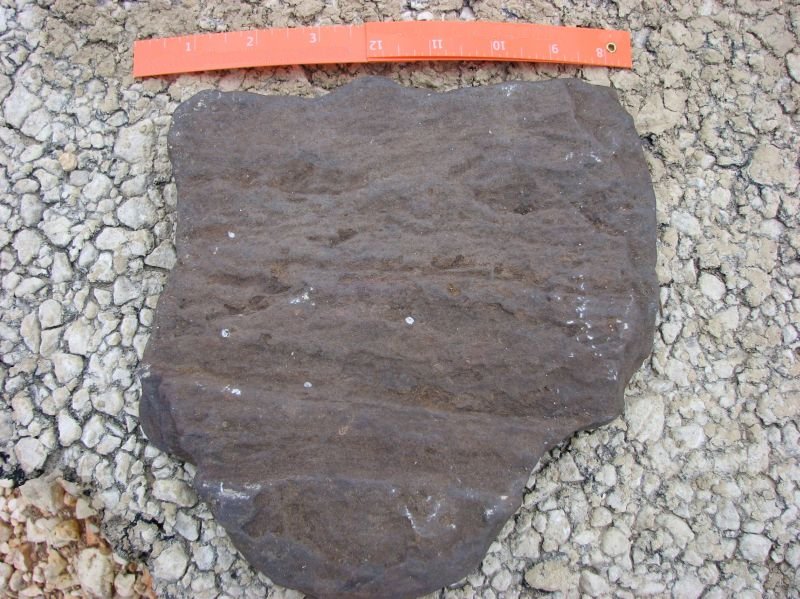
Very nice specimen of petrified/permineralized wood.
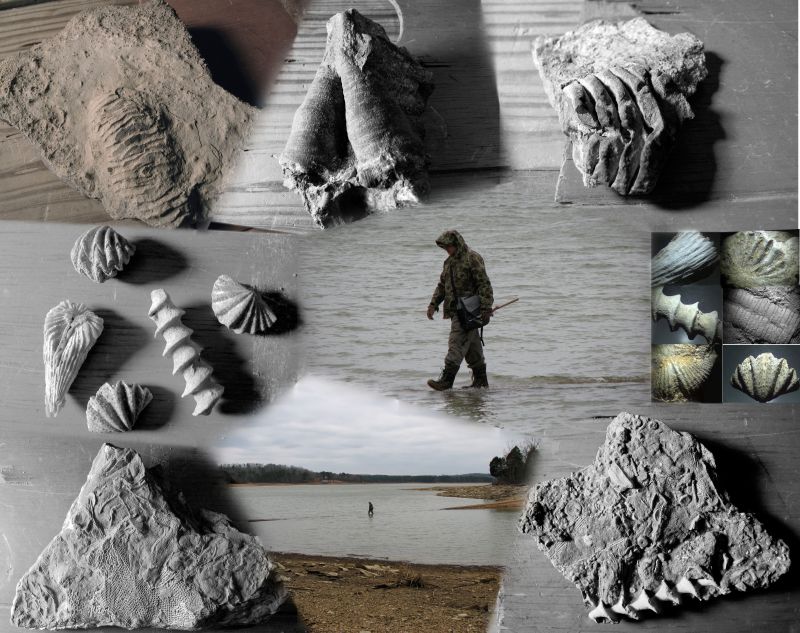
How'd he do that?? Bill has found several nice specimens. Click, then click again for larger image.
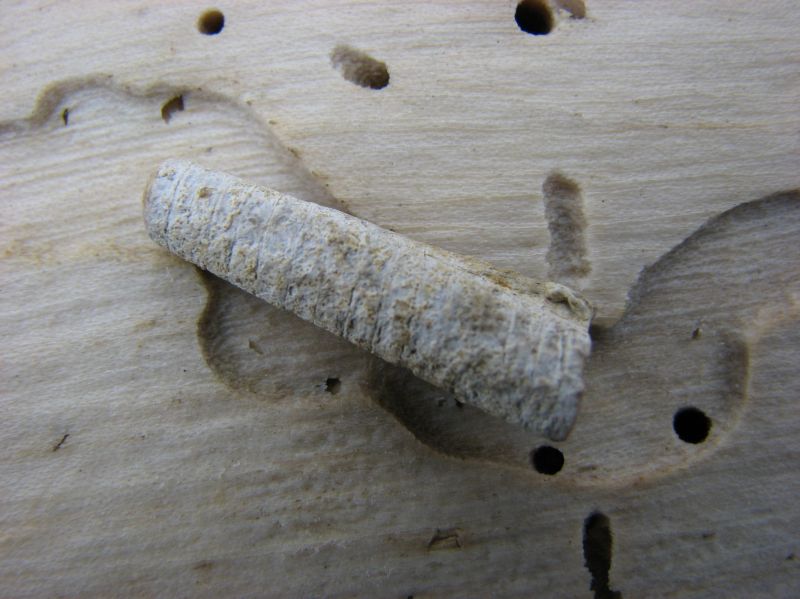
Nice cephalopod.
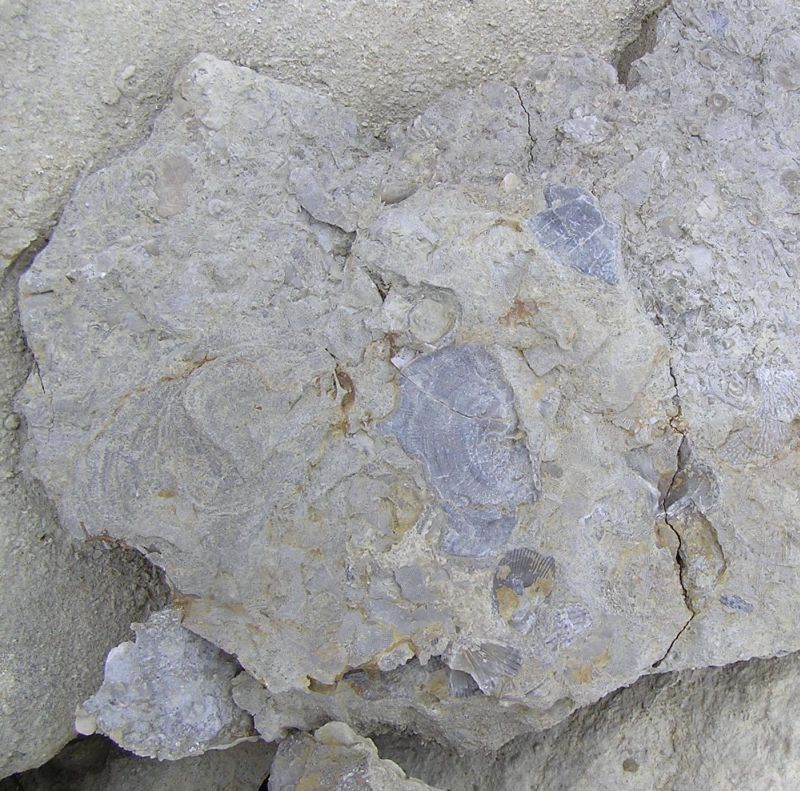
Brachiopods.
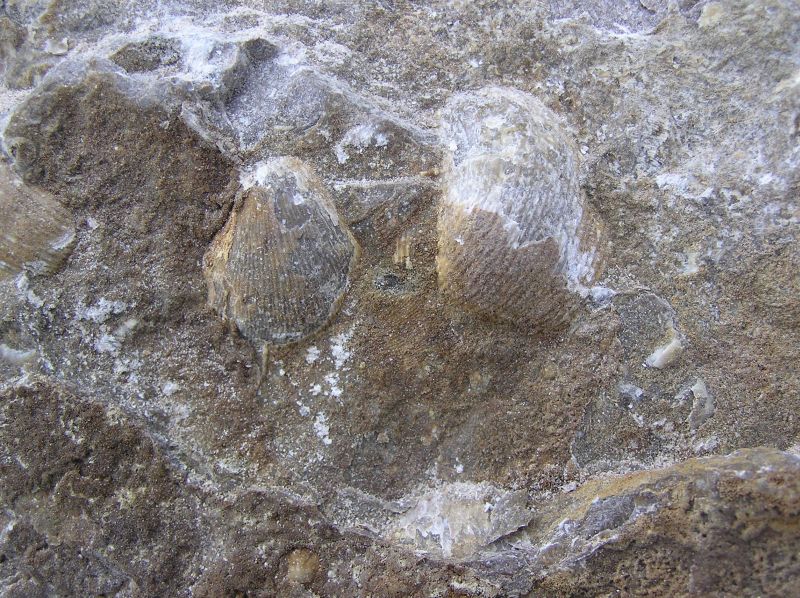
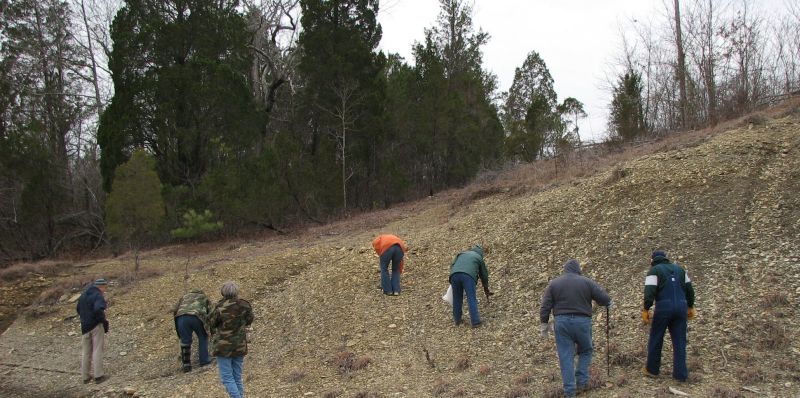
After the lake, we collected at a nearby roadcut.
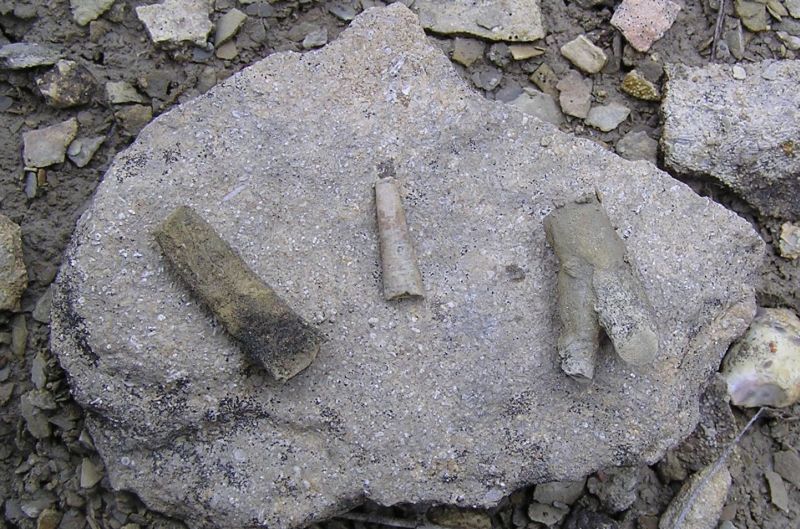
Numerous specimens of burrow casts were found, and also a few straight cephalopod's (in middle).
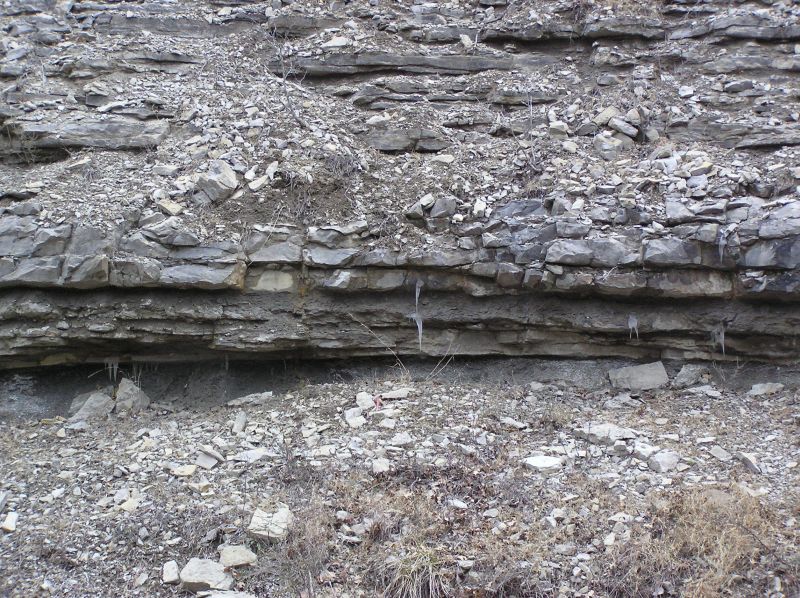
At the last stop of the day, geologic layering is very prominent.
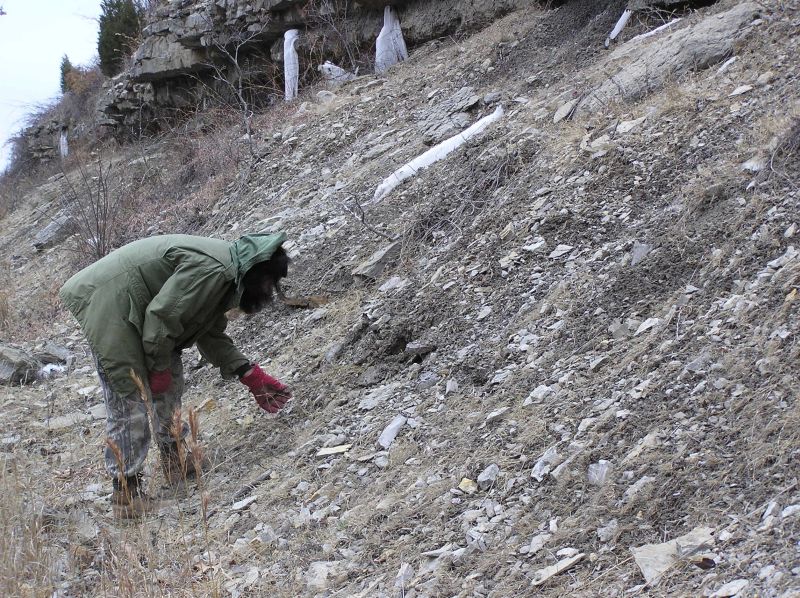
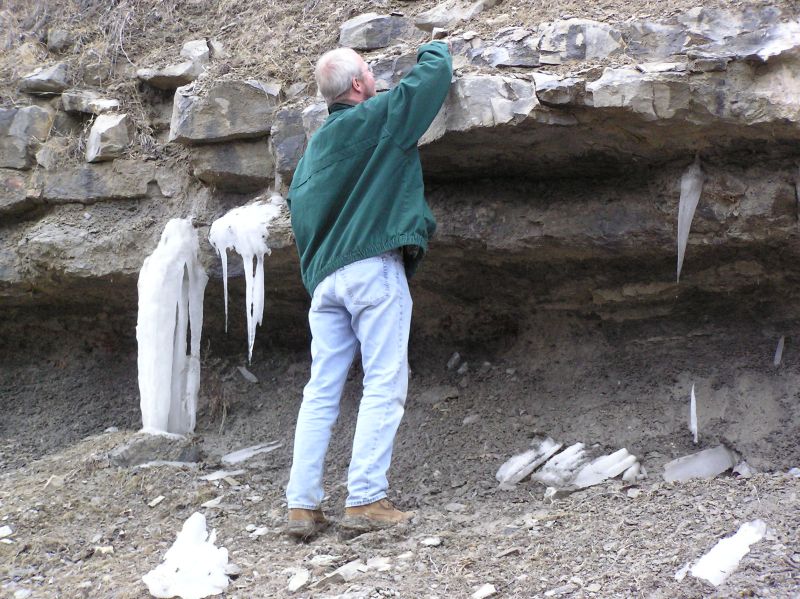
Tall people have a distinct advantage!
Back in the car headed to site #2, and it began raining again. Darn! As the drizzle quits, someone suggests a side trip to the lake, to check the water level, and much to our delight, it was way down, so we added an unexpected new stop, where everyone found a number of crinoid stems, blastoids, archimedes, an unknown trace fossil, and horned coral. One comment was "How many days do we get to spend here?". The weather got warmer, and became very pleasant, even without coats (a real thrill to those of us who remember many collecting trips tolerating the icy cold wind that normally whips around the point most of the winter). In keeping with our international flavor, two guests from Japan (who have only been in the US since July) joined us for their first ever-fossil trip. We may have spoiled them. NO you DON'T find fossils on every spot of ground in Alabama!
Then, when Greg was able to tear us away from the lake, on to the next location, site #3, a popular road cut in Colbert County, where nice blastoids, archimedes, and straight cephalopods were found. Also, an outstanding question was answered. On our August 2005 field trip, an odd, lightweight, heart shaped disk was found in Montgomery County that we couldn't identify. On one of Vicki's side excursions today, she found part of a vertebra column, probably of a deer, and several of the heart-shaped cartilage discs were found in place. Now we know - not a fossil, but very interesting.
The 4th stop had a few specimens, but not enough to linger.
At that point, part of the group went to an additional site, where there were nice fossils, mostly still in matrix. This site contains metallic, cubic mineral specimens that have not yet been positively identified. They look similar to pyrite, but are the wrong shape and color. They are small, about 1/4 inch, cubic, shiny reddish-gold copper colored, and heavy for their size. The square sides aren't exactly straight, since they have a dip in the middle. They could possibly be limonite after pyrite.
After that, the entire group met up again, and headed to an off-the-beaten-path steak house in the middle of nowhere to wind down for the evening and enjoy each other's good company before starting the long trip back home.
(photos courtesy Lea Martin and Vicki Lais)
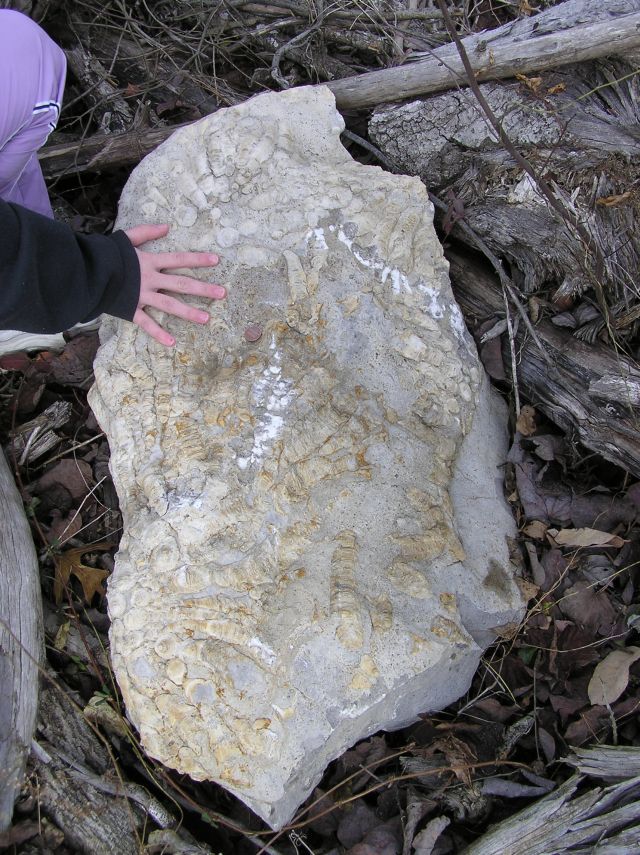
The first stop produced very large specimens of rugose coral, most too large to carry.
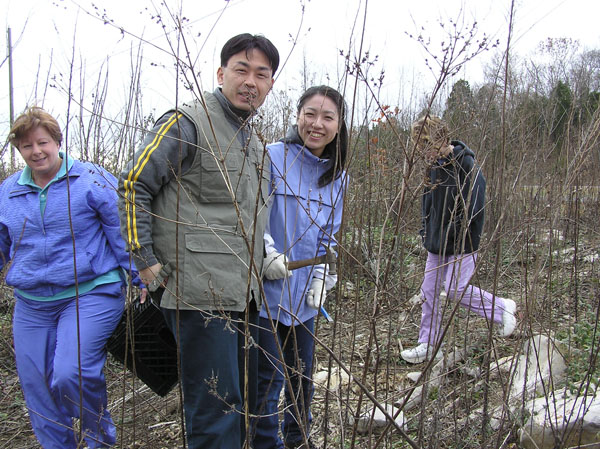
Leisa, our Pres, and new members Hitoshi and Yakari on their first fossil trip... Welcome to Alabama!
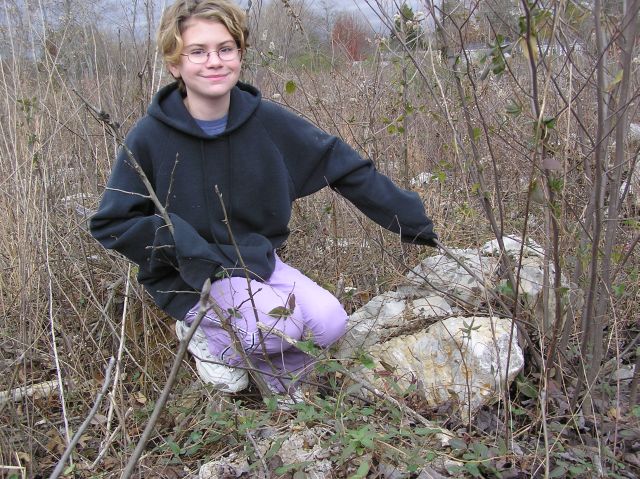
Paige just needs her picture taken since she is so photogenic. What a nice specimen of coral she's found!
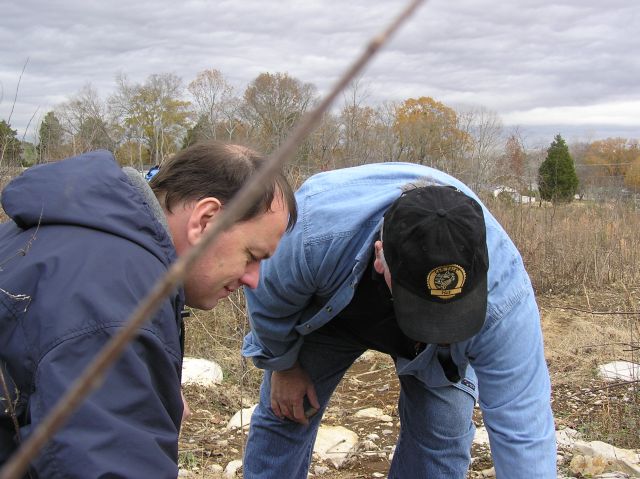
Jan and Greg searching for loose corals.
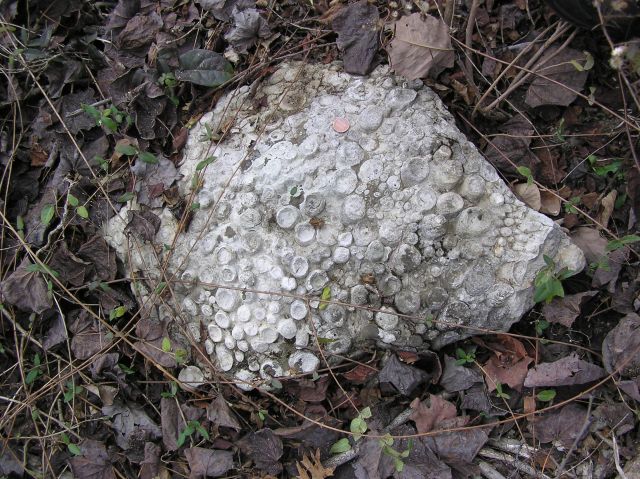
One of the nicest specimens.
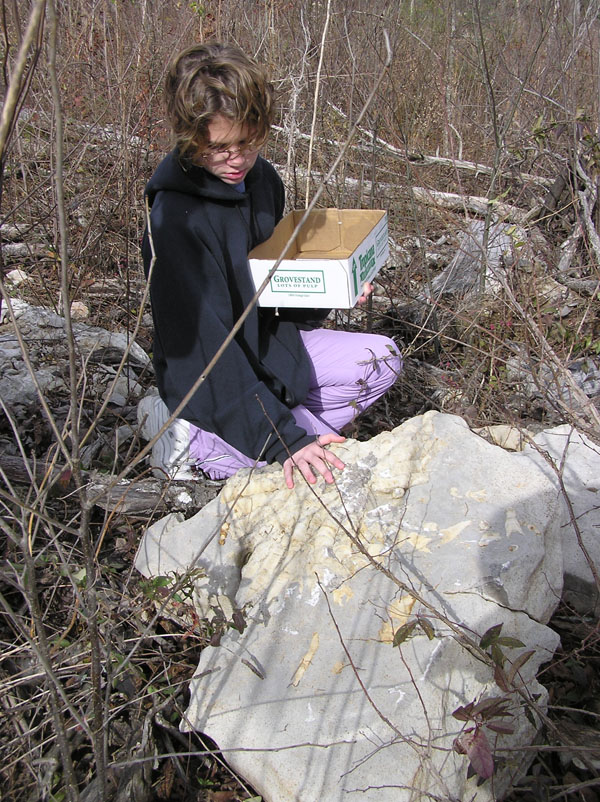
Uh.... Paige..... I don't think it will fit in your box......
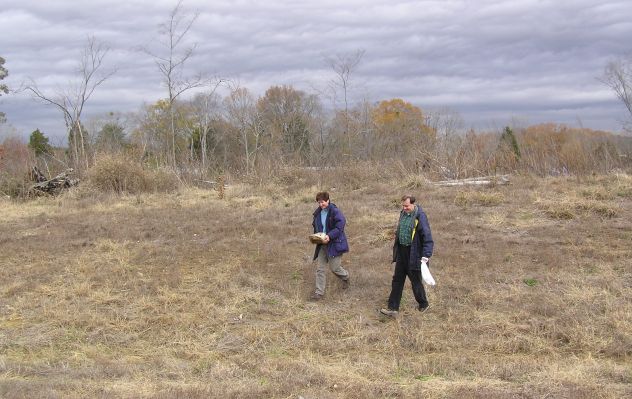
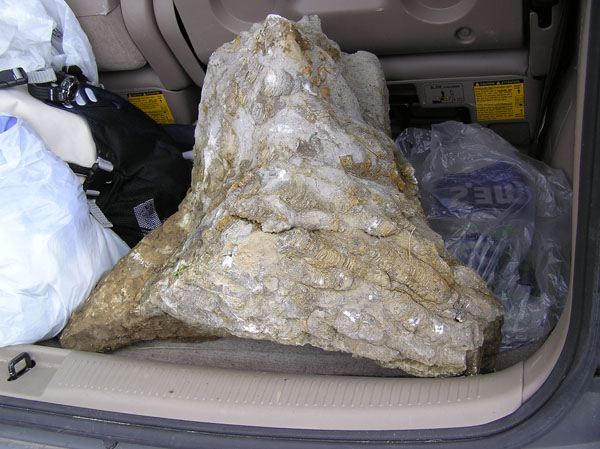
Lea Novak has lugged this large coral to her car.
On to site #2 -
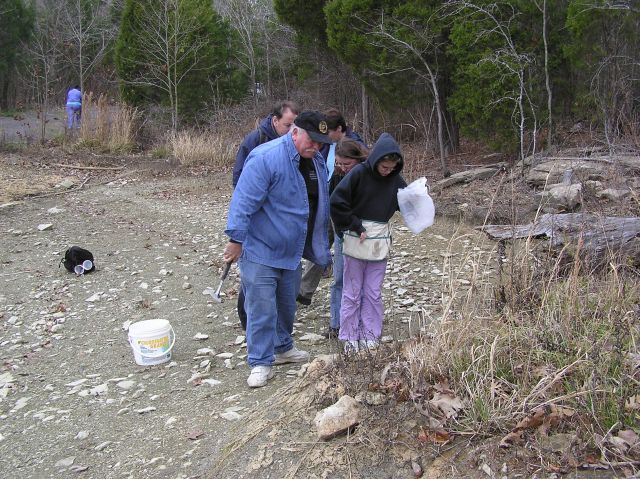
Most of the rocks on this lakeshore are filled with small fossils. Most plentiful are crinoids, blastoids, archimedes, and horned corals.
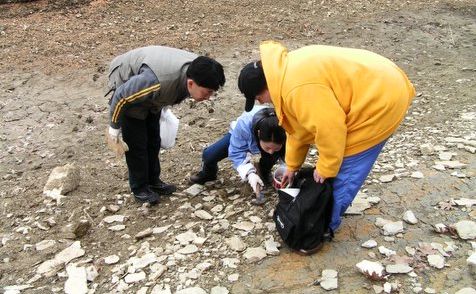
Leisa showing our newest members fossil specimens on the rocks.
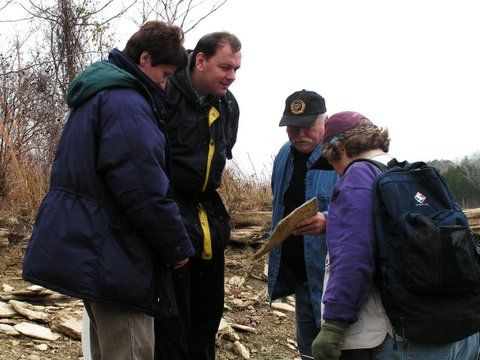
Greg has found a nice slab to show how plentiful fossils are in this area.
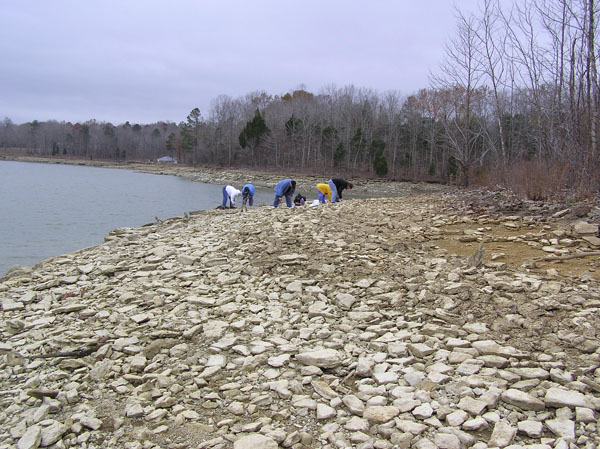
Every rock here is covered with fossils. So why search? Some rocks have weathered more than others, and the fossils are in nice relief. Some have more "perfect" examples, some have more of the "pretty" fossils, or displayed a larger variety.
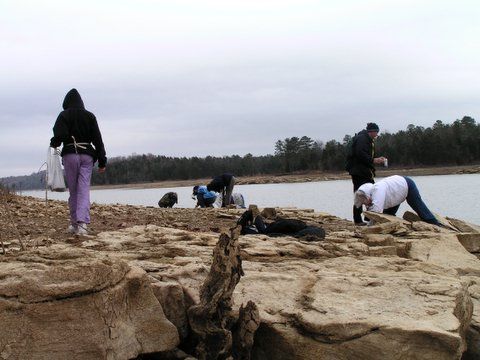
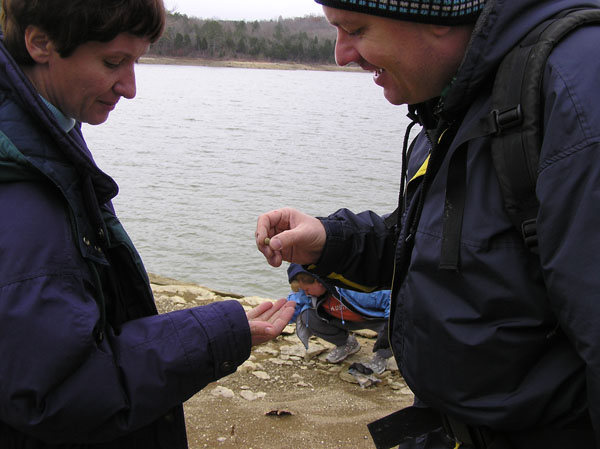
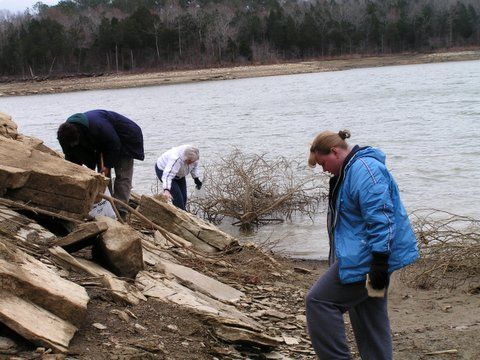
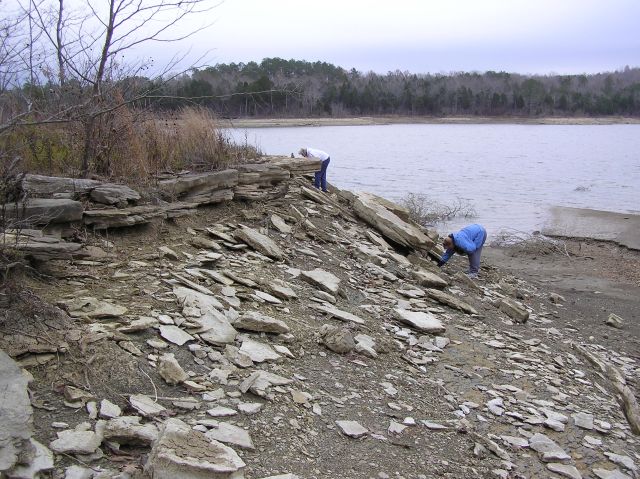
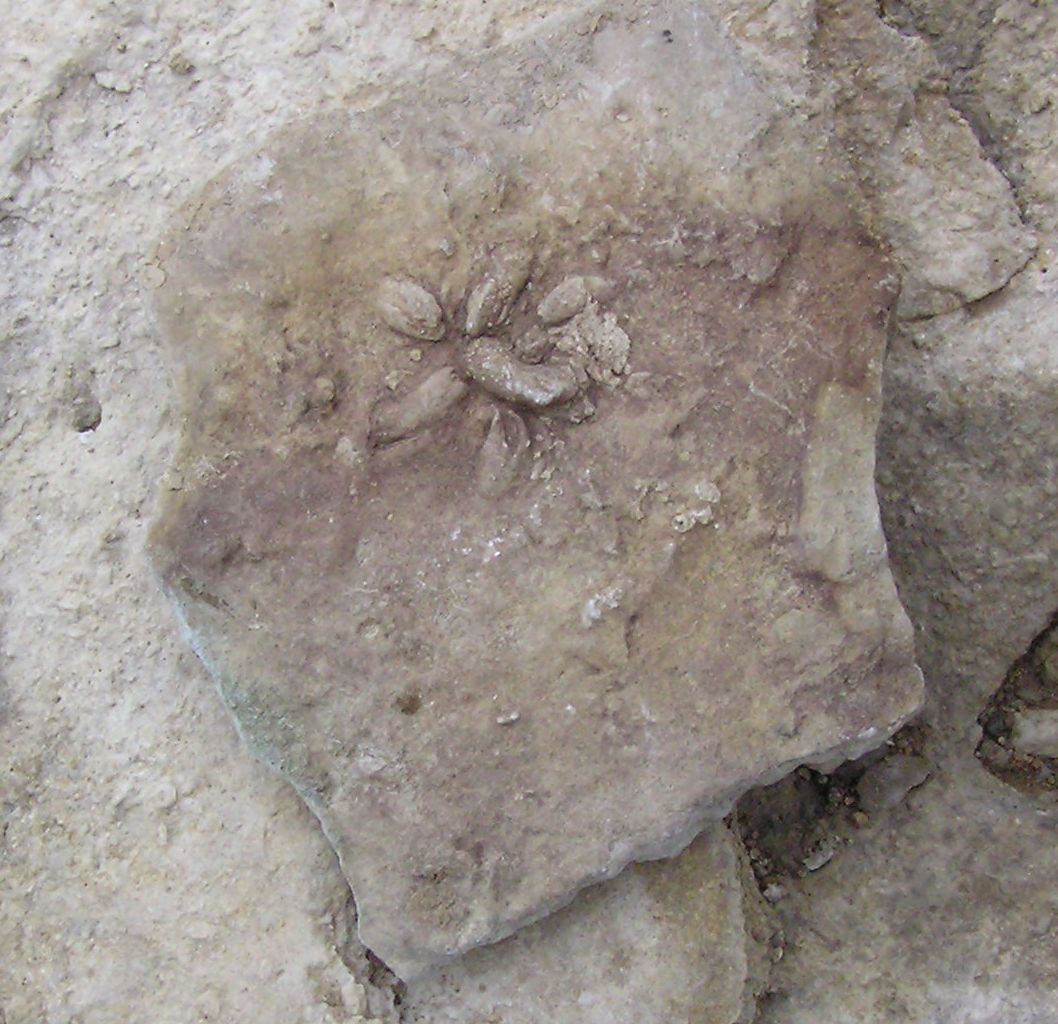
Melanie has found a nice.... well....umm.... trace fossil??
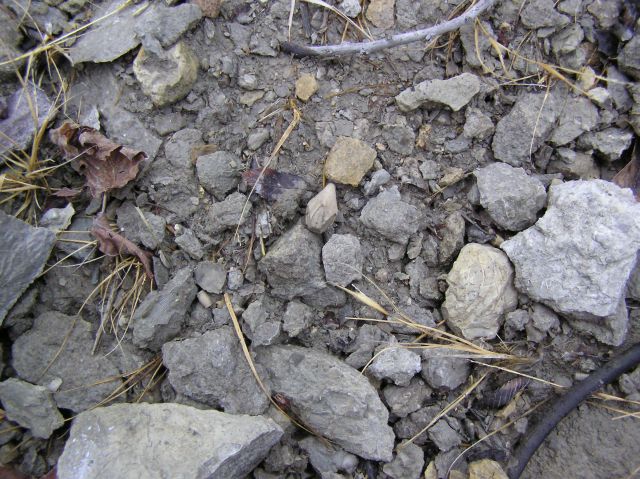
Look carefully in the middle of the photograph to see a blastoid.
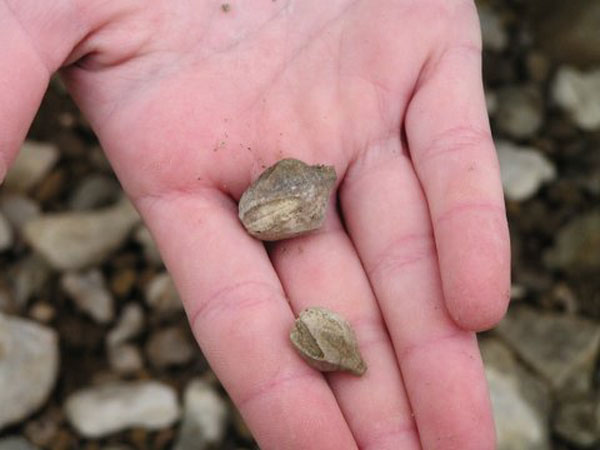
Closer view of blastoids.
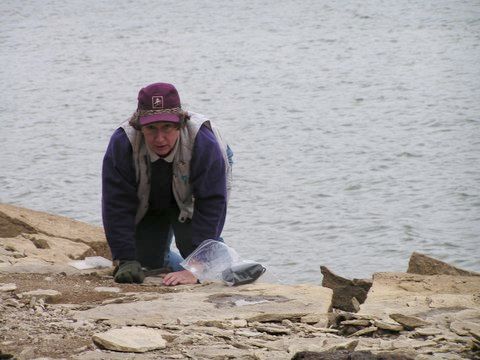
Hi, Claire!
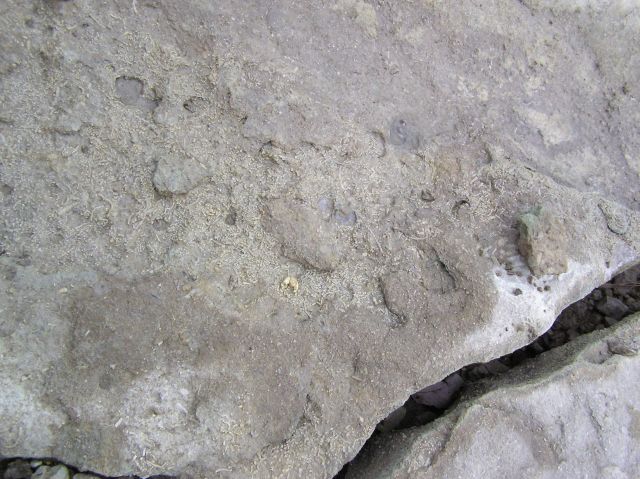
Hard to see, but this boulder is covered with very tiny crinoids, probably a breeding area.
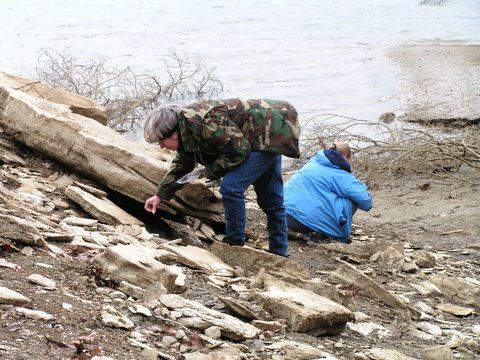
Stop #3 is a roadcut -
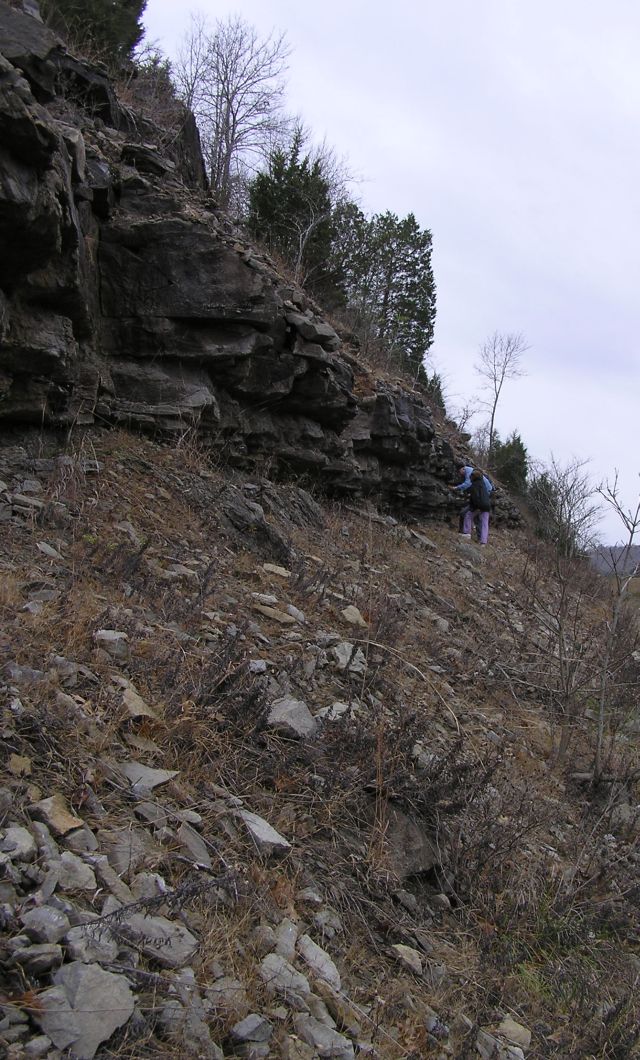
Blastoids, horned coral, and archimedes were found in this area.
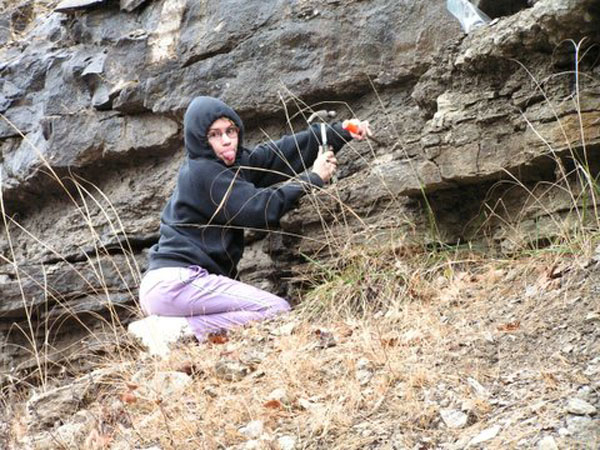
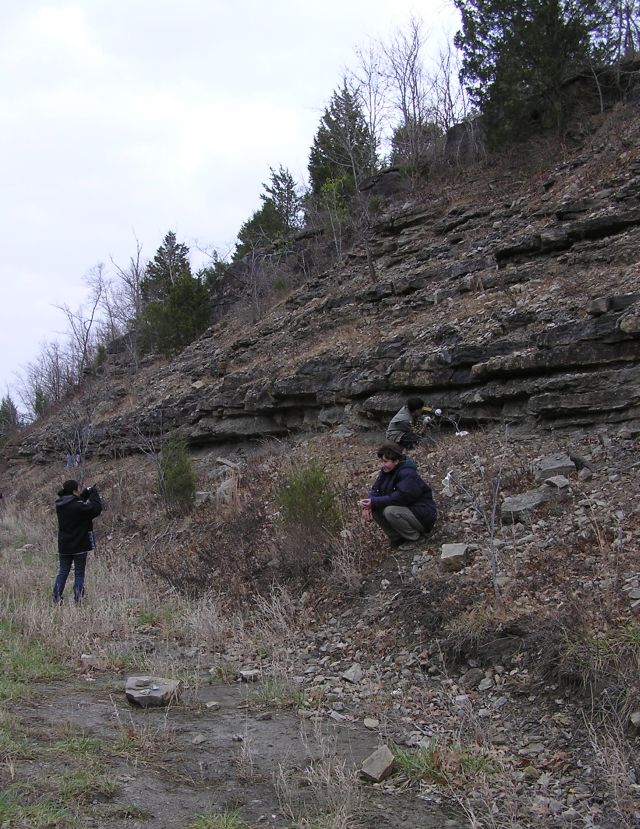
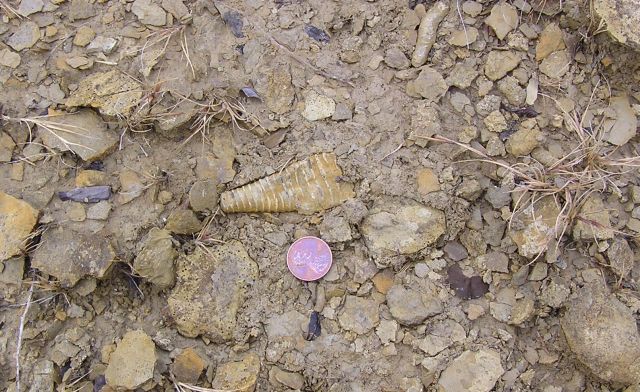
A few straight cephalopods were also found.
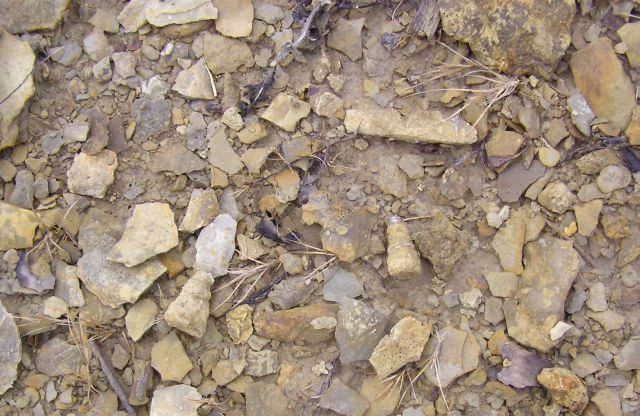
Some fairly worn specimens of horned coral.
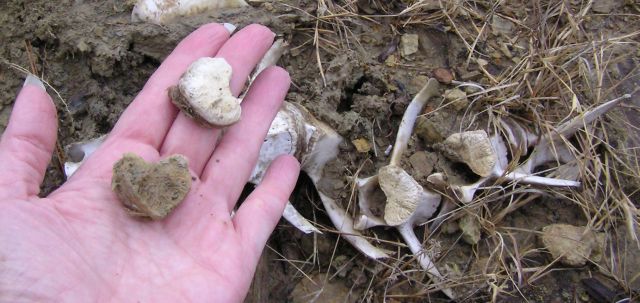
Another mystery solved. A heart shaped item had been found on our Montgomery trip, but no one knew what it was. Several of them were found in place today - in a deer spine. They are the discs between vertebra.
Stop #4 - another wash in a roadcut.
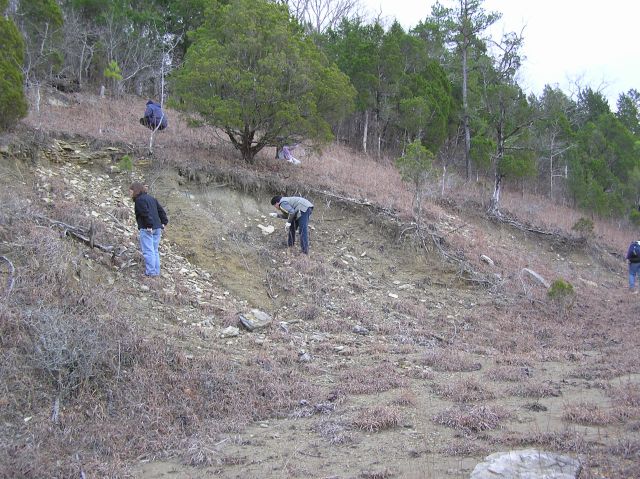
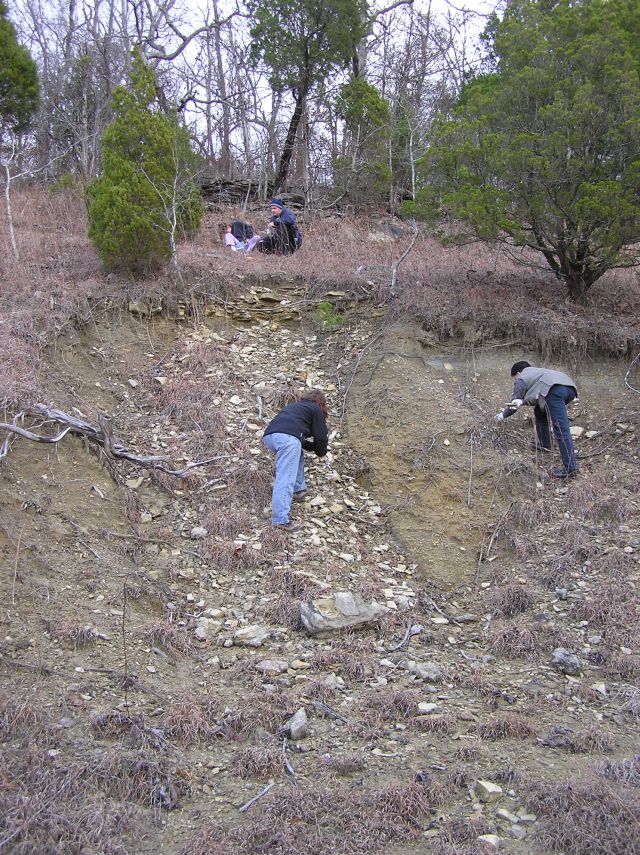
Very little was found at this location, but we had fun looking!
While most of the group headed for the local watering hole, 3 members proceeded on to stop #5:
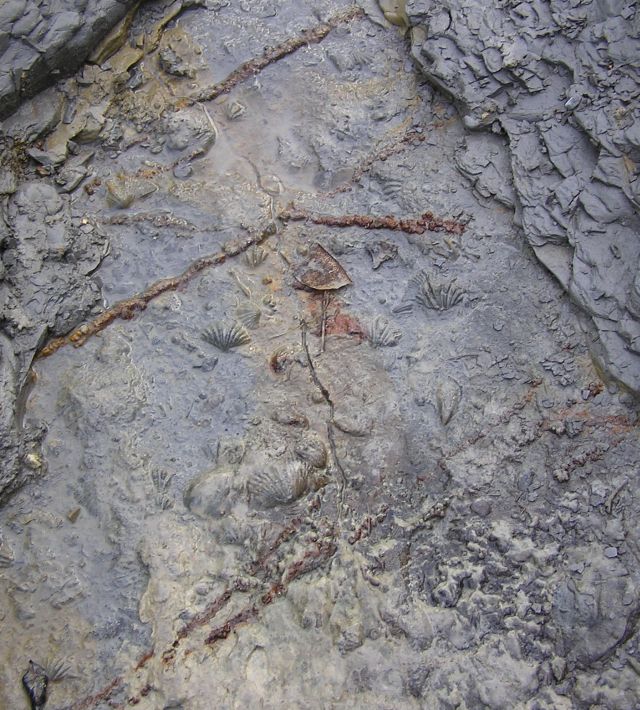
A beautiful layer of bivalves is now exposed. Impossible to collect without damaging the specimens, so we collected only photos.
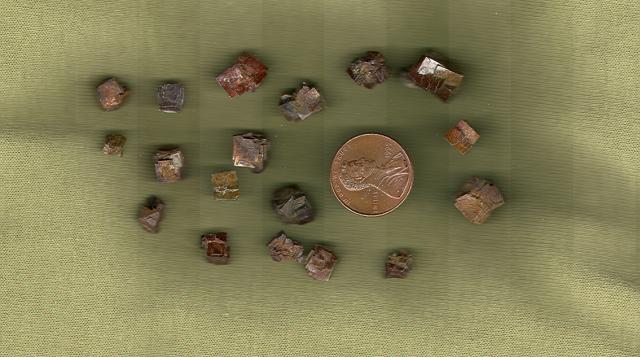
A closer view after cleaning. They are heavy, and may be pyrite. Possibly limonite after pyrite.
Our activity for December was the annual BPS Holiday Party, this time held at the home of Judy and Bill Lewis. They are fabulous hosts, and have a house built for entertaining. Their numerous trips to exciting locations around the world, and the treasures they have collected made for interesting conversations. Also, a number of members greatly enjoyed the pool table downstairs! Bill was in for a surprise. He hasn't been attending outings or meetings, but discovered that his favorite hobby, fly fishing, was shared by most of the men attending. He also found out many of our sites are found on fishing trips - I suspect we have another convert!
There was no official BPS outing this month, but several members participated in a "Scouting Outing". We took boats back to Franklin county, and scouted numerous spots around the lake. Some nice finds, but from debris piles, saw marks, and 4 wheeler tracks, it appears that there has been some serious collecting going on around this lake. One site that had been scouted about 3 years ago as a promising site, was virtually void of fossils now.
Some common fossils found around the lake are shown below.
(Photos courtesy Vicki Lais)
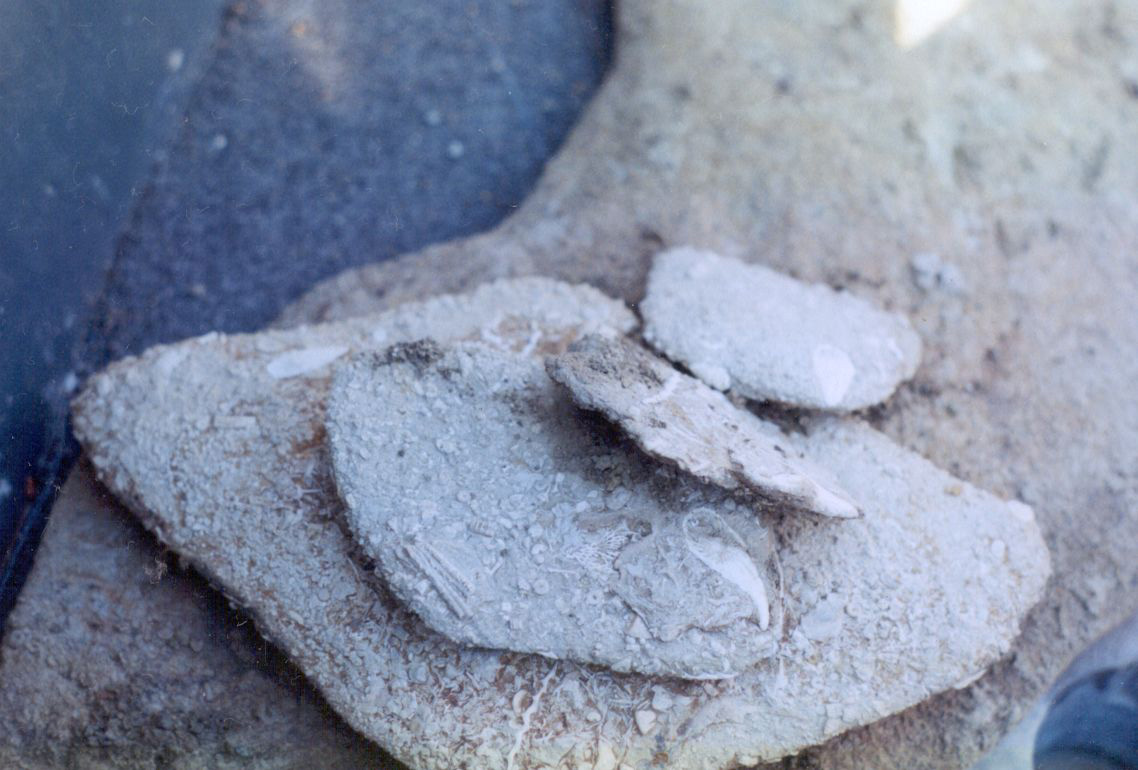
Gastropod and ostrocods.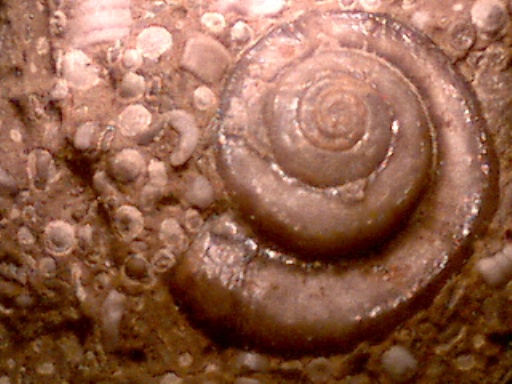
So much lakeshore, so little time....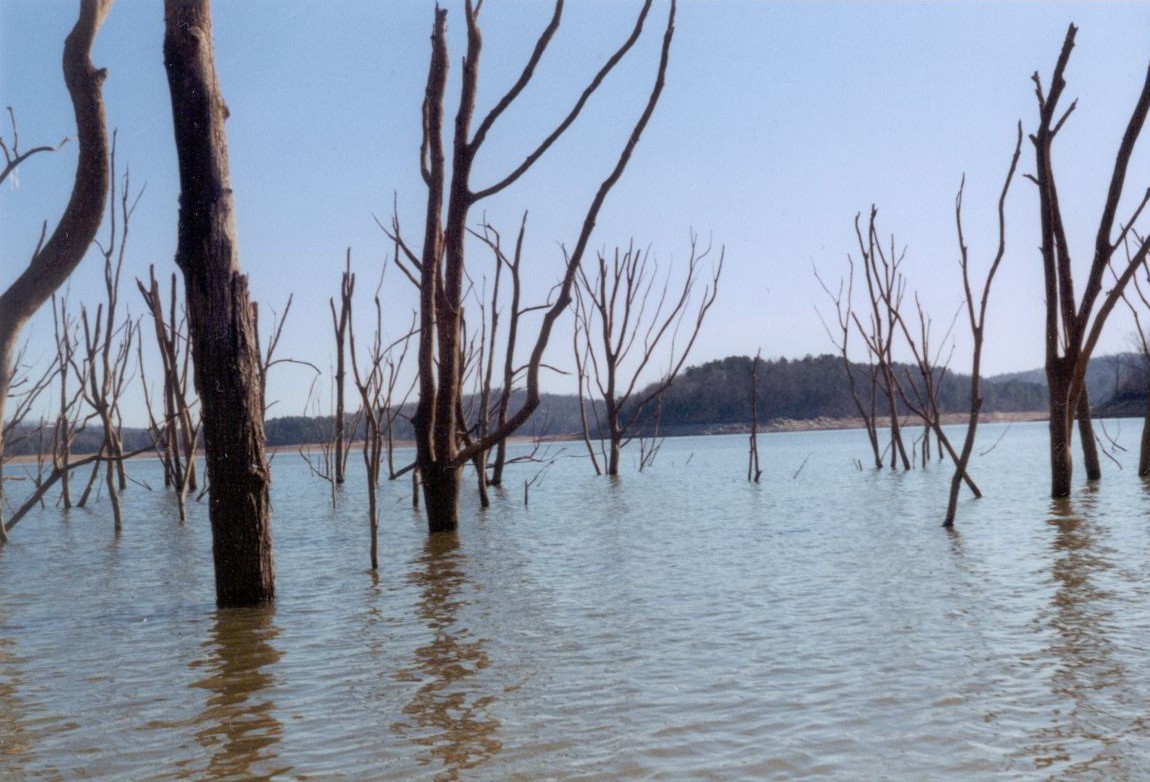
So where do we go next, guys?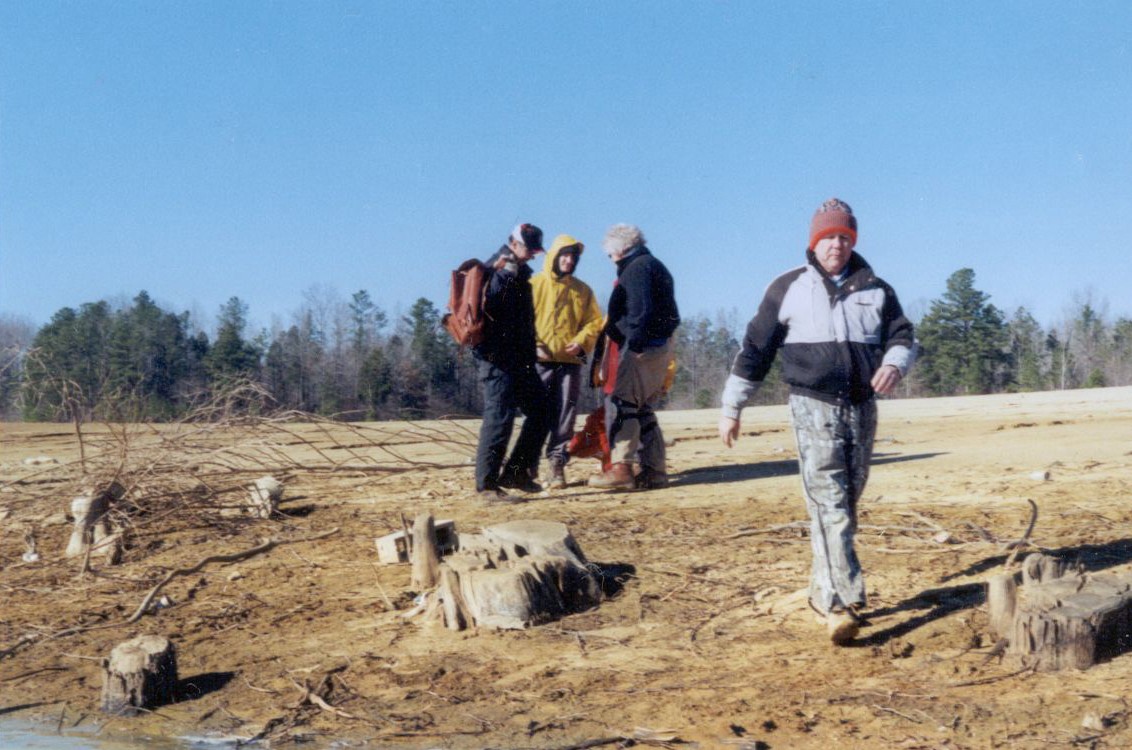
A wonderful day of exploring. Had fun. Goodbye - see you next time! 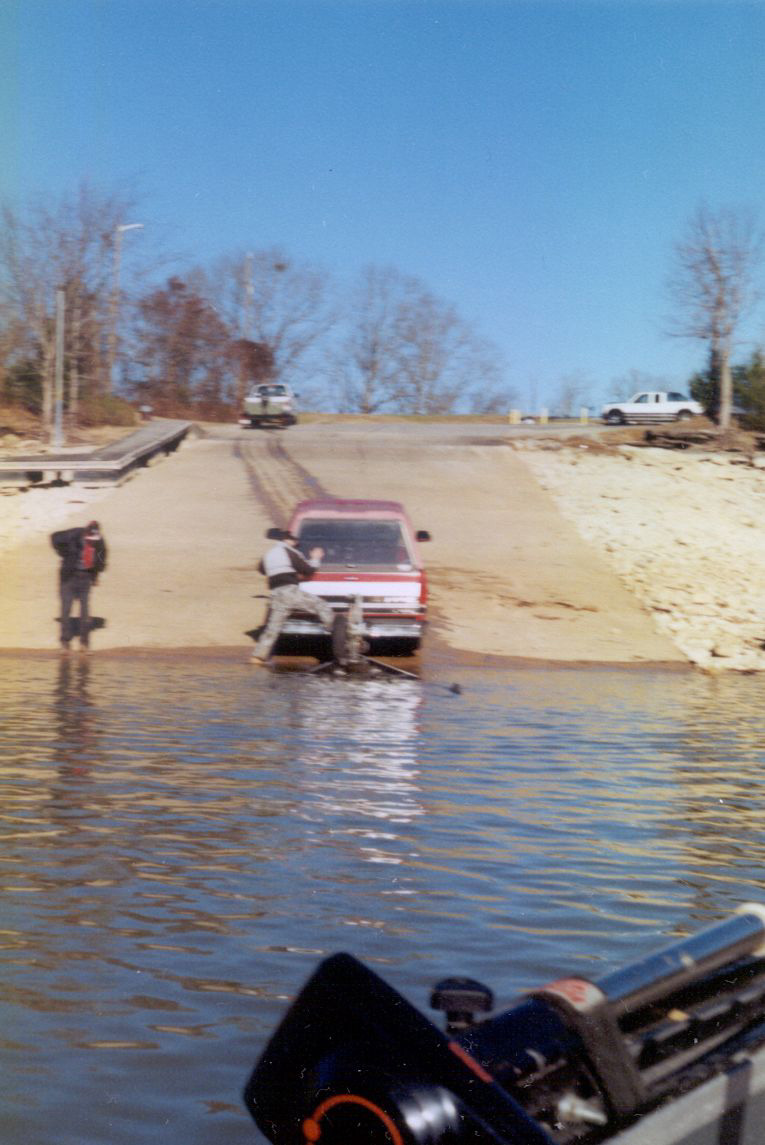
BPS took an earlier than normal trip to Russellville this month. Generally, the water is lowered during the winter, and a good low water level in January makes it easy to collect in the Bangor Limestone that surrounds the lake. But we found they were releasing the water much earlier, and much lower, than normal for a special project. Collecting was the best I've ever seen. Many formations that have been under water on all prior BPS trips were now out in the open. Crinoids were plentiful. Another trip is being planned to take advantage of this unique opportunity.
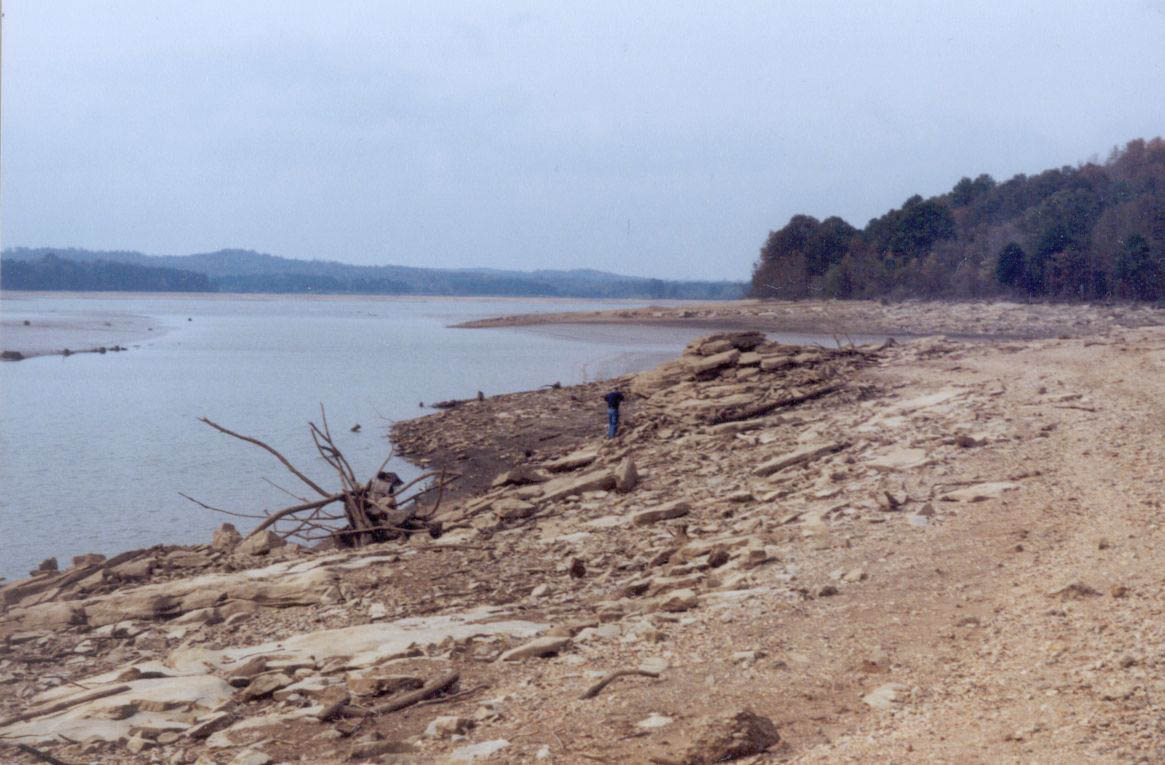
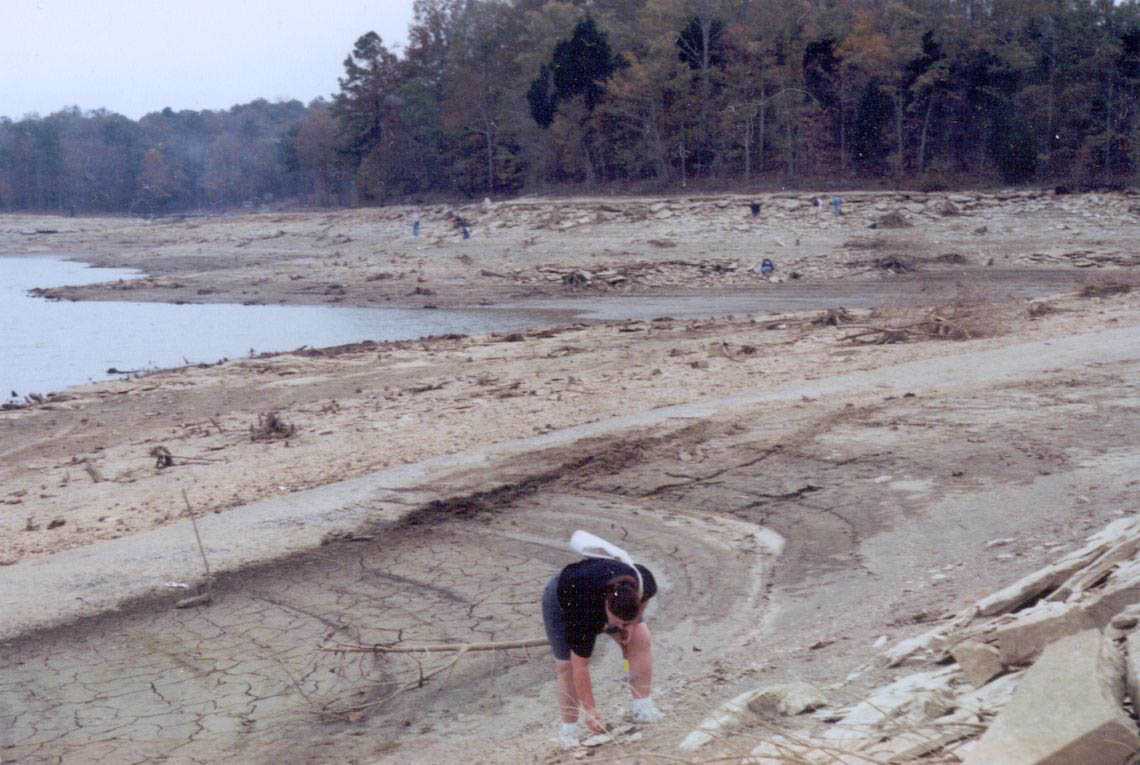
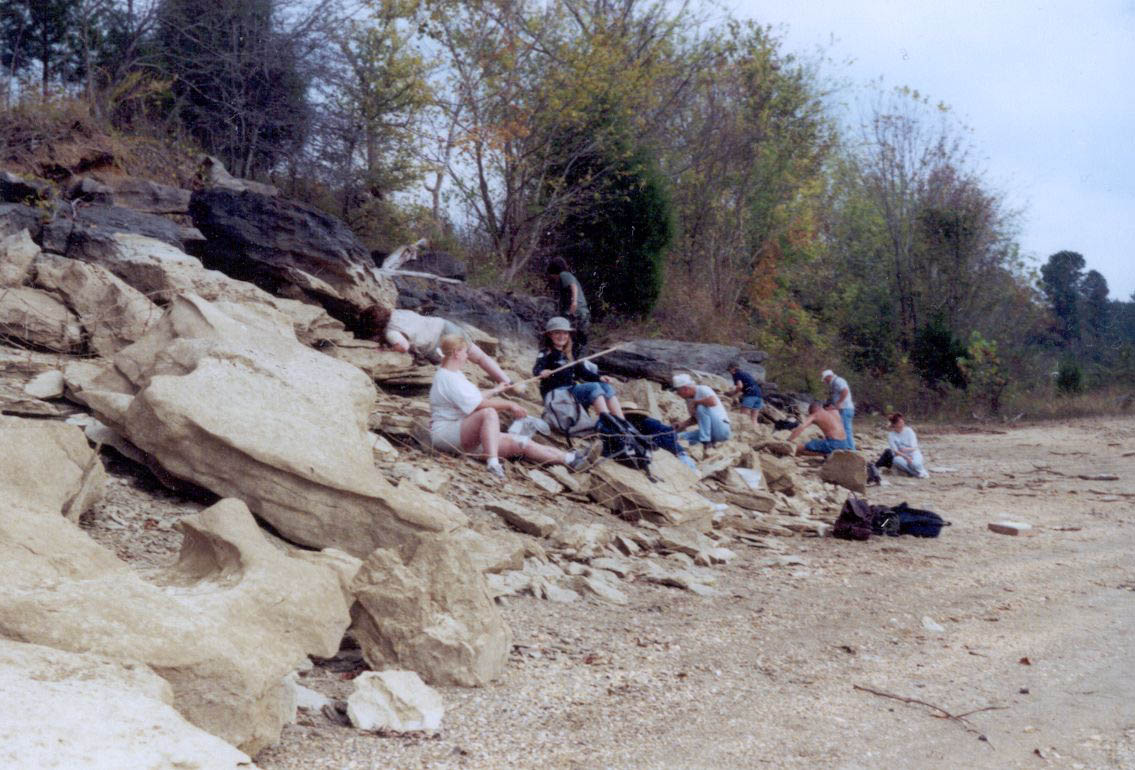
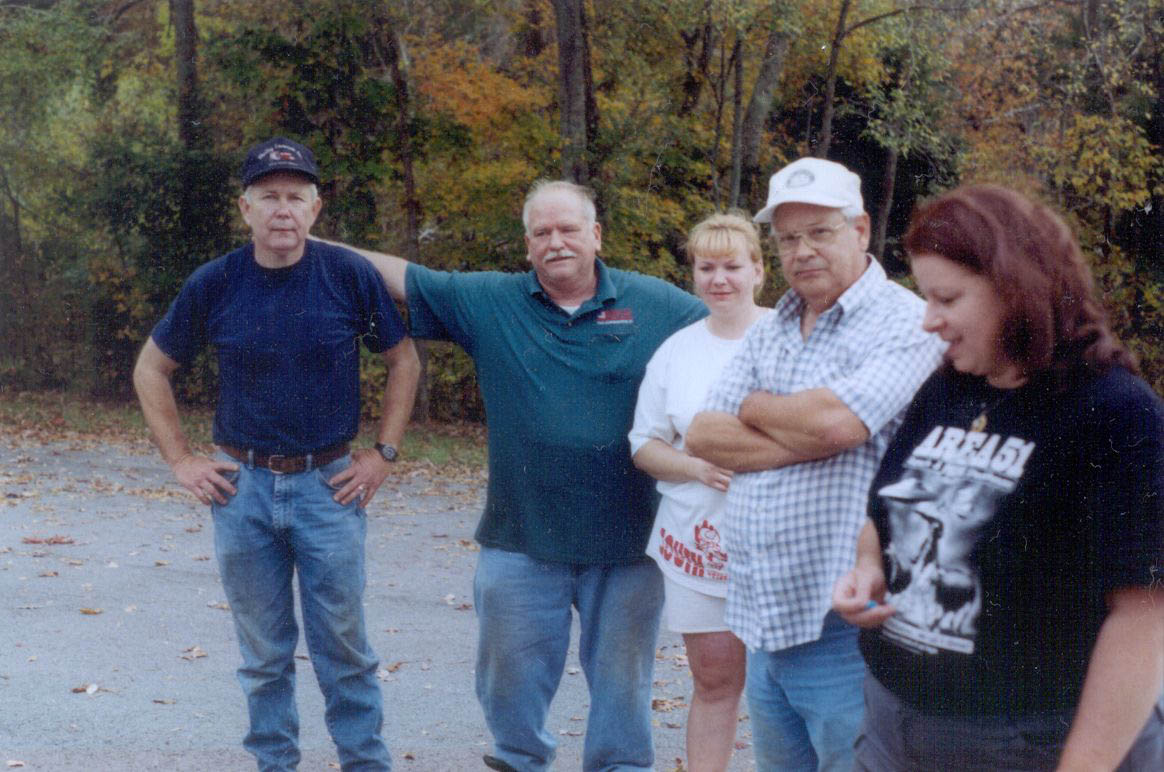
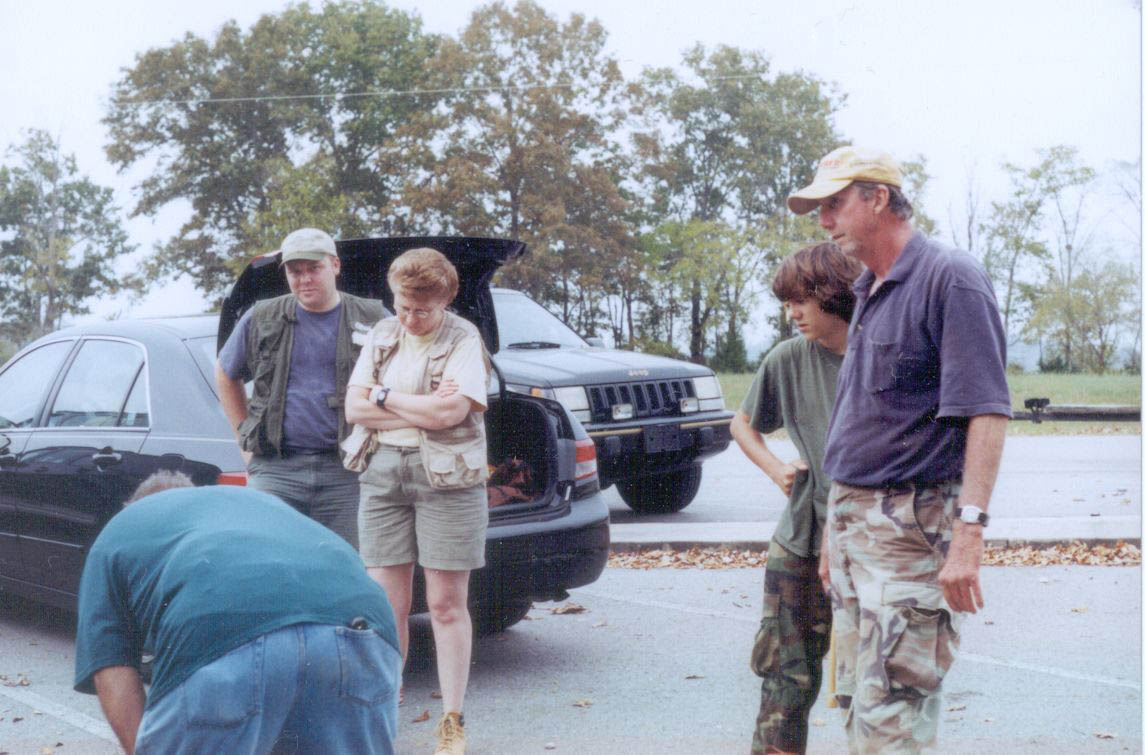
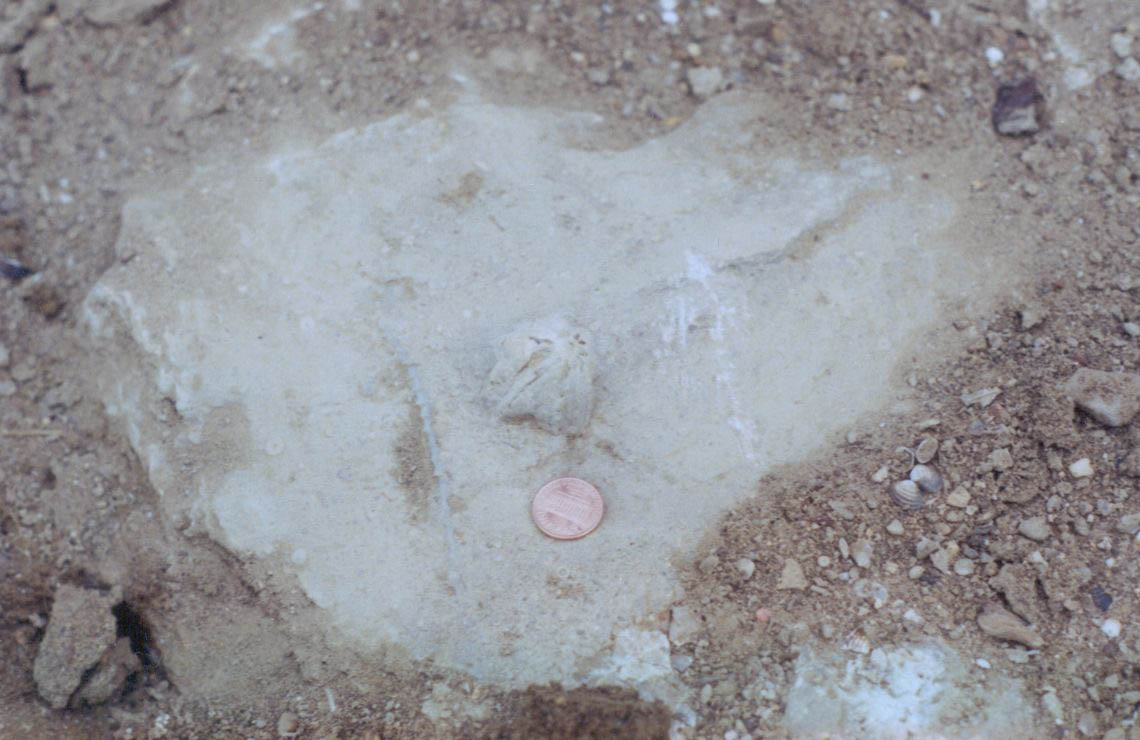
The one that got away. We discovered on our next trip that someone had come behind us and popped this one off.
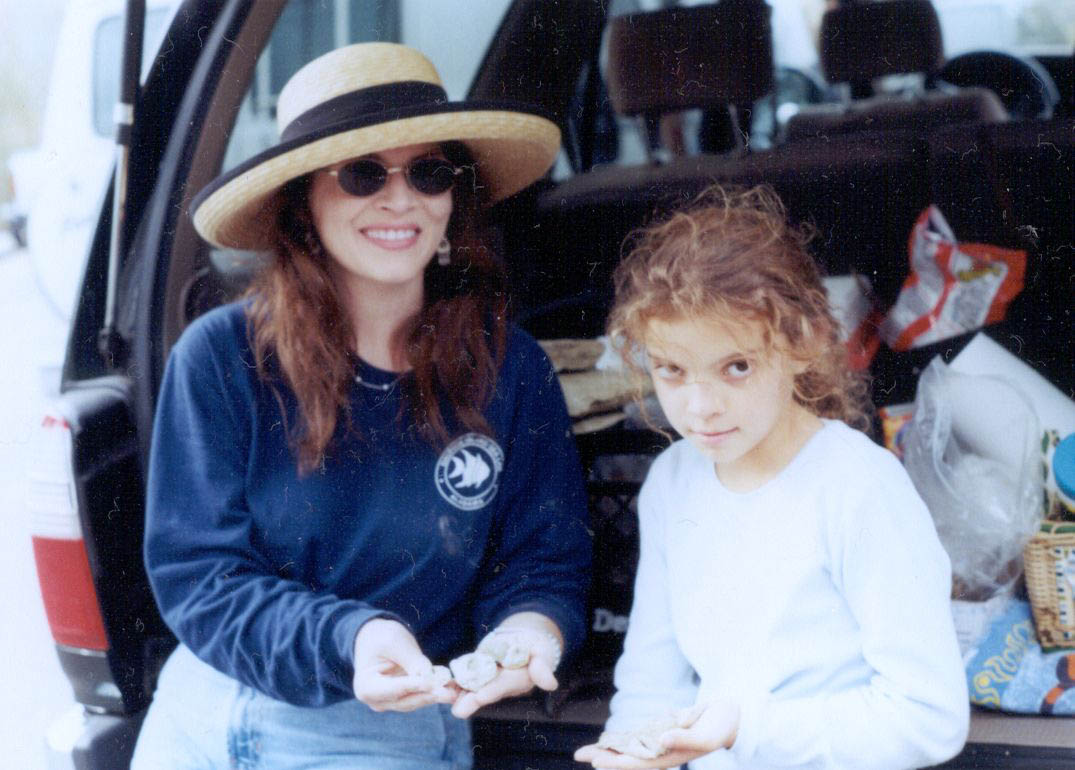
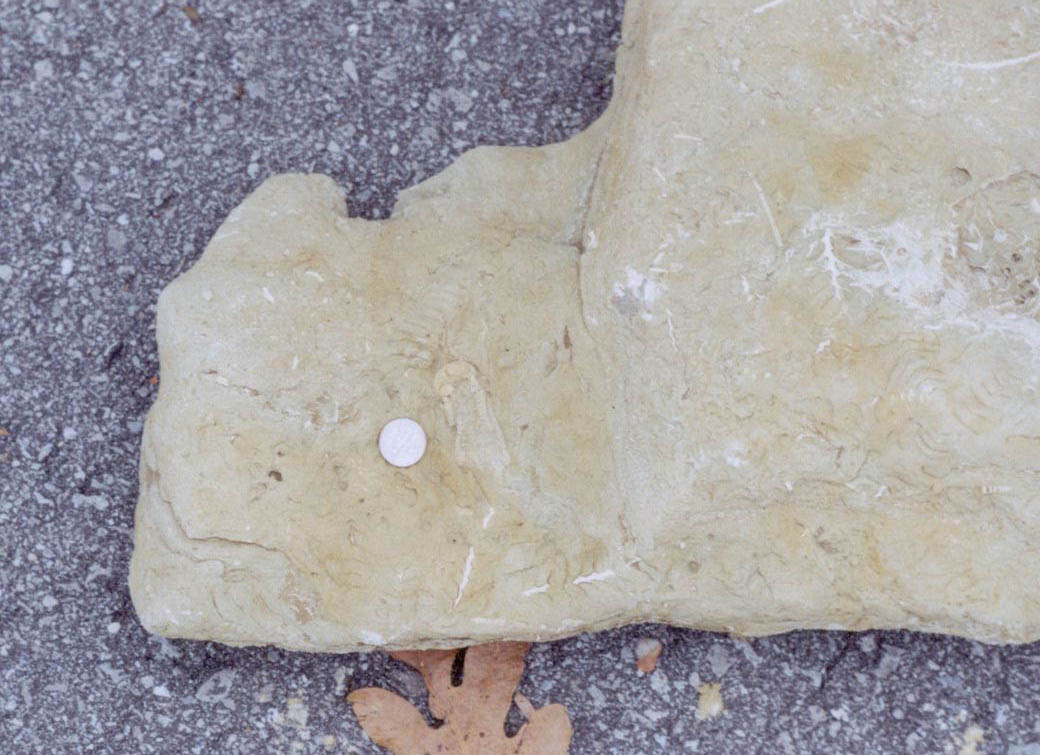
Back side.....
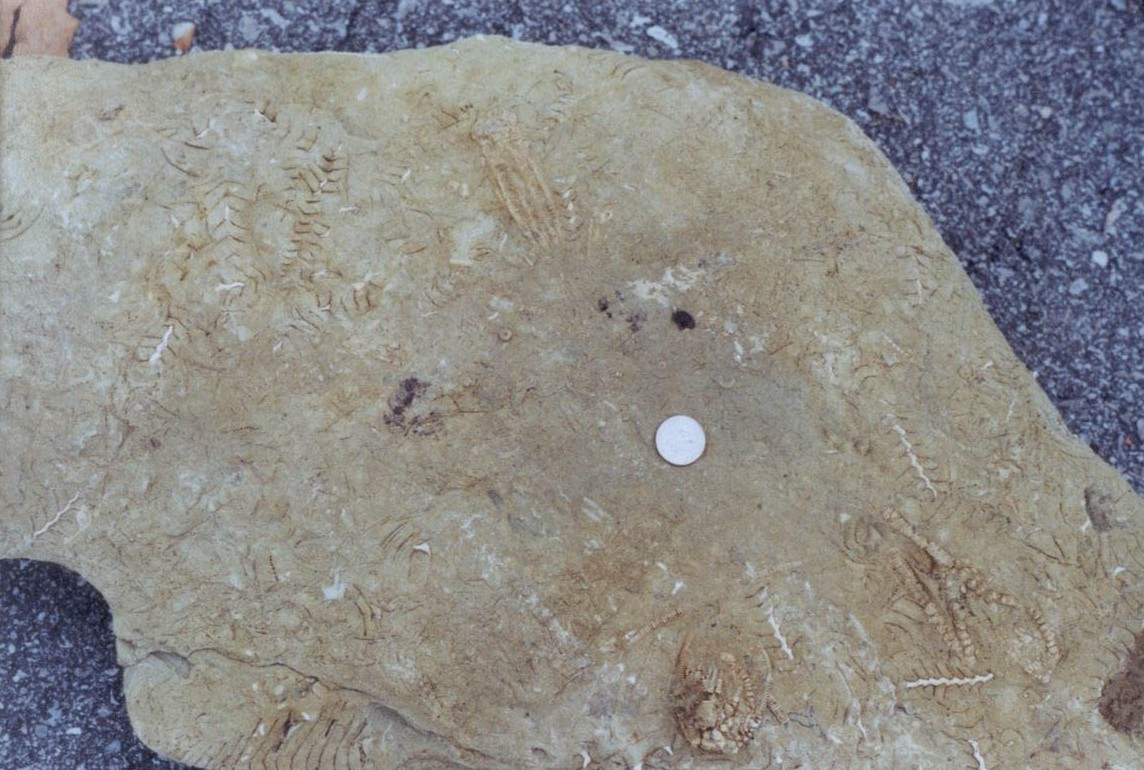
Front side.